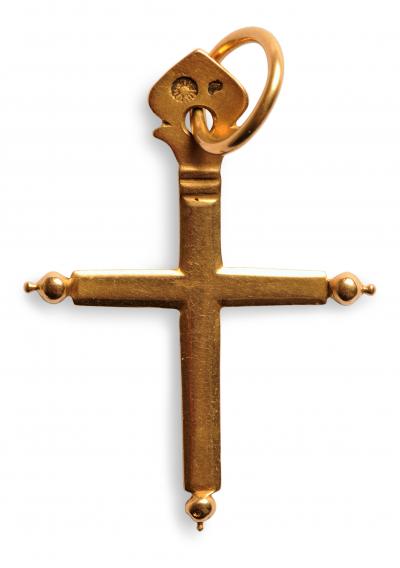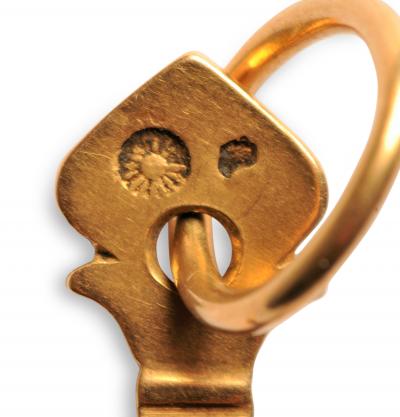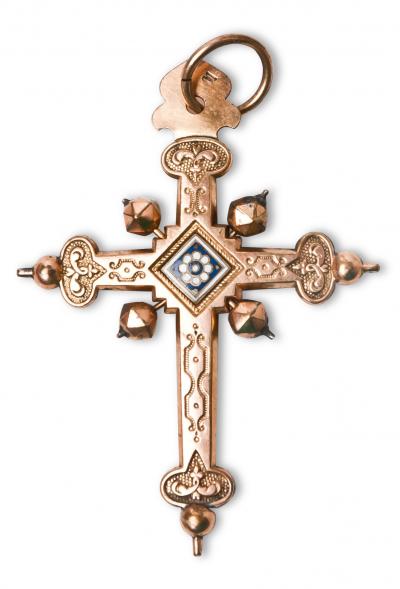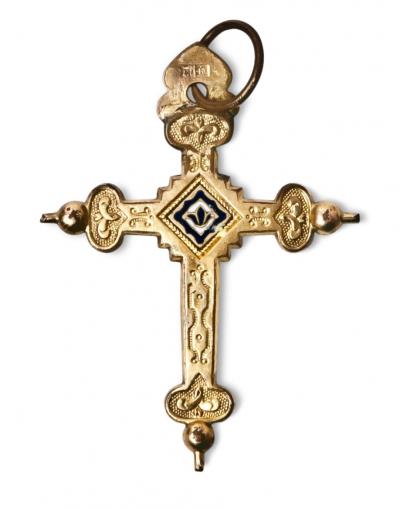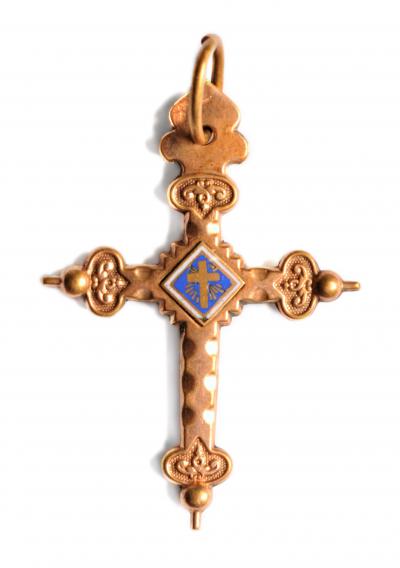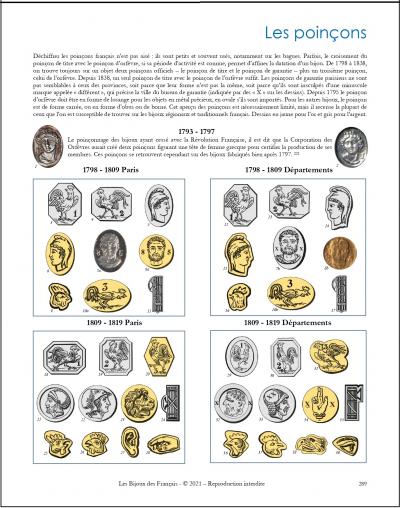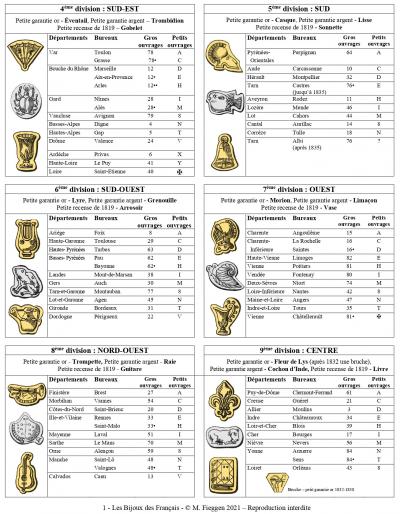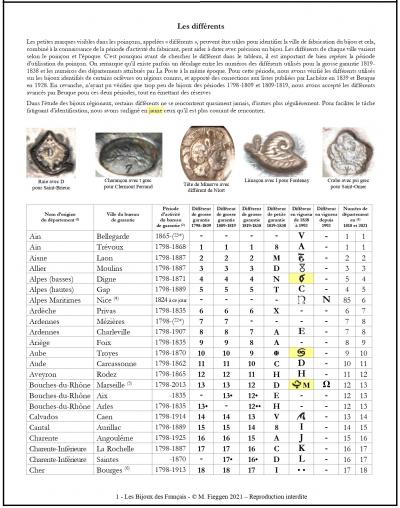bijoux de France - French regional jewelry - Antique jewelry
Savoy has had a rather turbulent history and has changed hands several times. From 1792 to 1815 it was a part of France, but in 1815 it was returned to the house of Savoy until 1860 and the signing of the treaty of Turin, at which time it was irrevocably ceded to France. The mountain people often bought their jewellery during a voyage to Turin and one sees an Italian influence in Savoyard jewellery, especially in the slides formed like a ribbon bow. As well as Italian jewellery, the Savoyards would bring back jewellery from the warmer areas in which they moved to for work during the rigourous Savoy winters, and one often finds crosses from Nice and Provence in Savoy. Although it has been claimed in some references that "bosse" crosses, traditionally associated with Normandy, were made and worn in Savoy, not one of the crosses presented to me had Savoy hallmarks and it can be assumed that the rare examples cited were in fact made elsewhere and came from purchases, gifts, marriages or inheritances from other regions.
An important documentation of the Savoy mountain folk culture, costumes and legends was published by the artist Estella Canziani with "Costumes, traditions and songs of Savoy" in 1911. (1) Some of her lithographs have been reproduced at the bottom of this page.
The grille cross of Chambéry
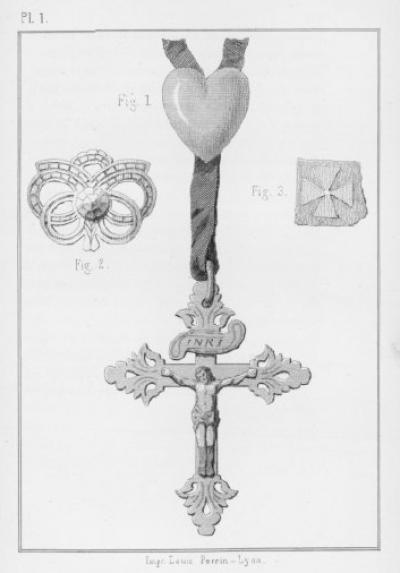
Grille cross from Chambéry, engraving from the article by Laurent Sevez, 1862
photo courtesy BNF (3)
bijoux de France - F
The grille cross of Chambéry is a Latin cross with chiseled branches with flowered ends and perforated by three holes in the form of tear drops. The top of the cross, where a hole is drilled to pass the suspension ring, is often thicker to prevent wear from enlarging the hole. On the obverse is soldered a representation of Jesus while the reverse represents Mary.
According to Paul Bisch, "certain Chambéry crosses bear a crescent moon under Marie's feet, and are worn from Montmeillan to Geneva, from Chambéry Aix-les-Bains to Haute Maurienne. " (9) I have never come across an example.
rench reg
|
|
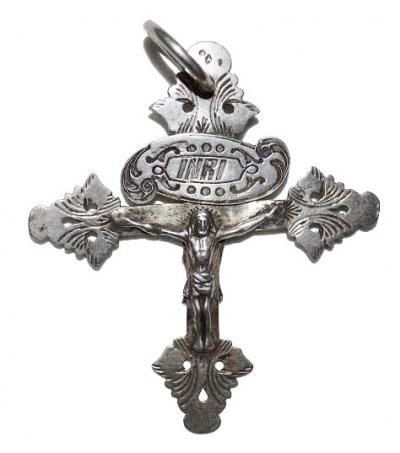
Silver grille cross from Chambéry |
|
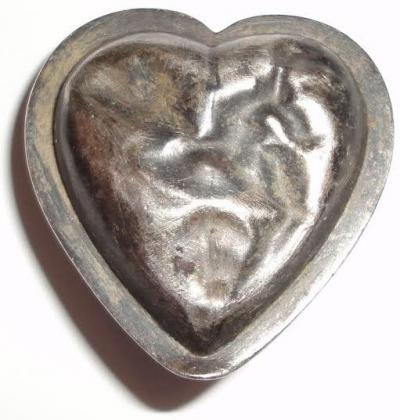
Heart-shaped slide with Sardinian hallmarks, silver
|
|
ional jewelry - Antique
bijoux de France - French re
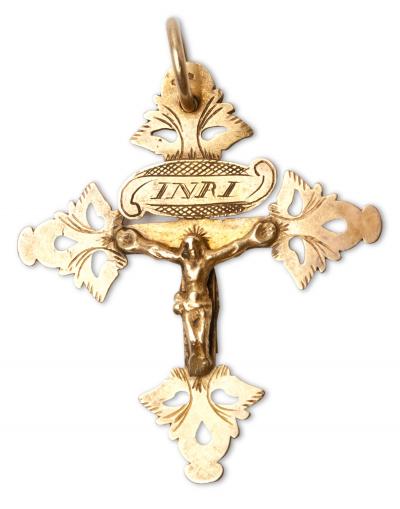
grille cross from Chambéry, gold |
|
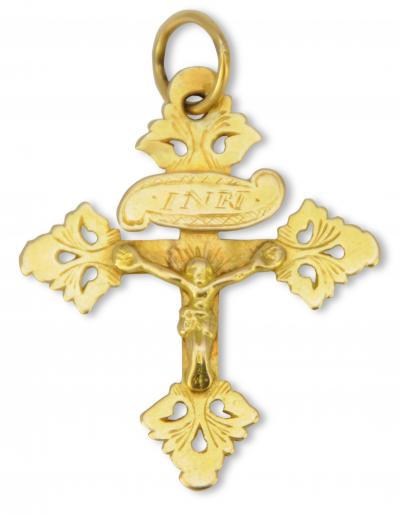
grille cross from Chambéry, gold |
|
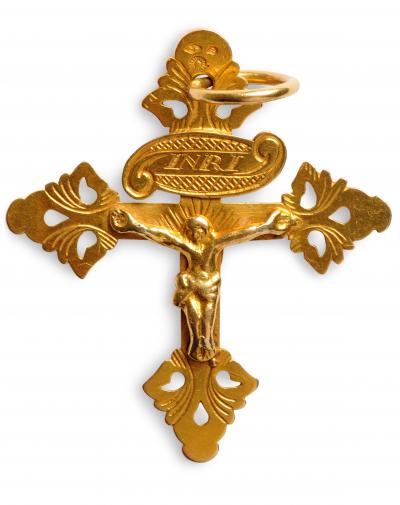
grille cross from Chambéry, gold |
Grille cross from Chambéry, gold
|
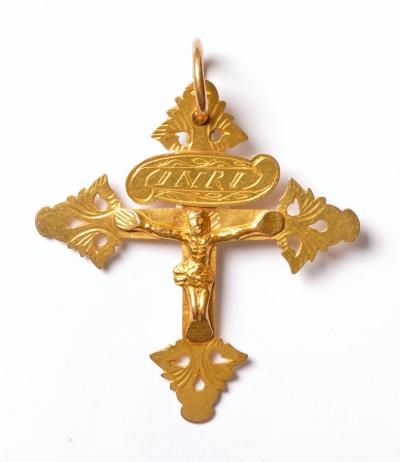
Grille cross from Chambery in gold, front
|
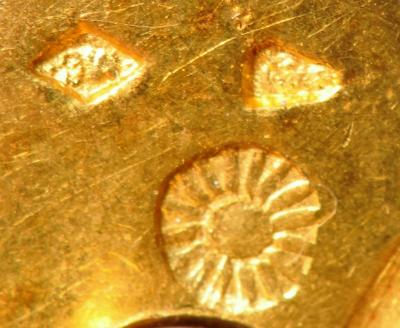
|
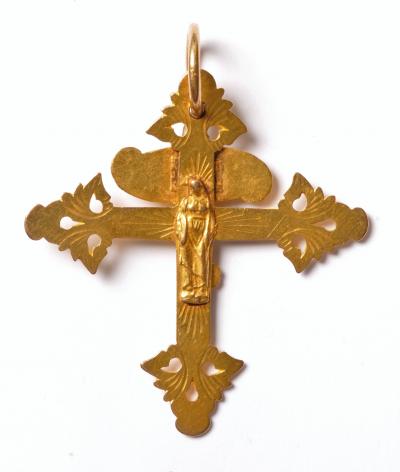
Grille cross from Chambery in gold, back
|
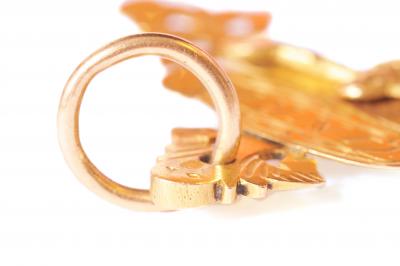
Detail of the Chambery grille cross, note the thickened area
at the top to prevent the hole from becoming enlarged after extended use
The Dauphinoise grille cross
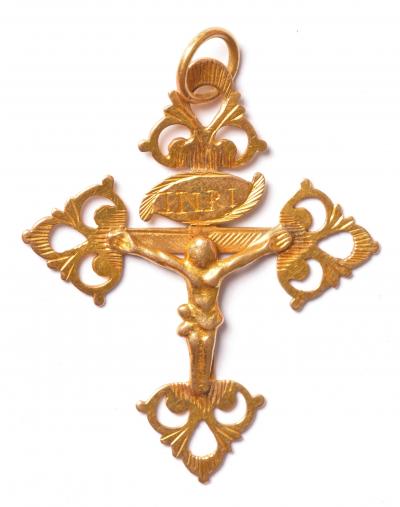
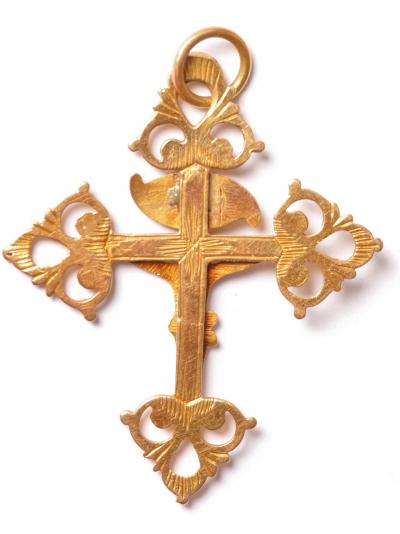
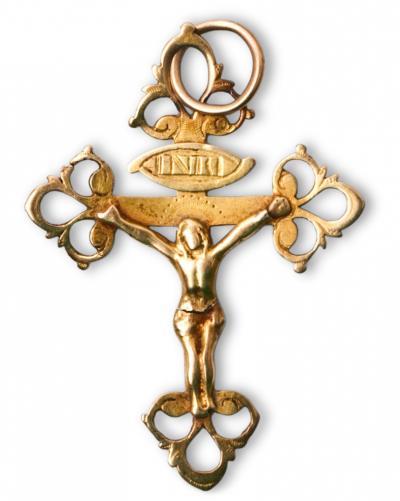
Dauphinoise grille cross in gold
e jewelry
The ends of the arms of the dauphinoise grille crosses have more openwork than those Chambery grille cross, and they have less of a kite shape and more of a triangulaire shape. Unlike the grille crosses from Chambéry or Saint Colomban des Villards, these crosses don't have a figure of Mary on the reverse. According to Paul Bisch, these crosses were known as "croix dentelles" or "lace crosses" in the nineteenth century.
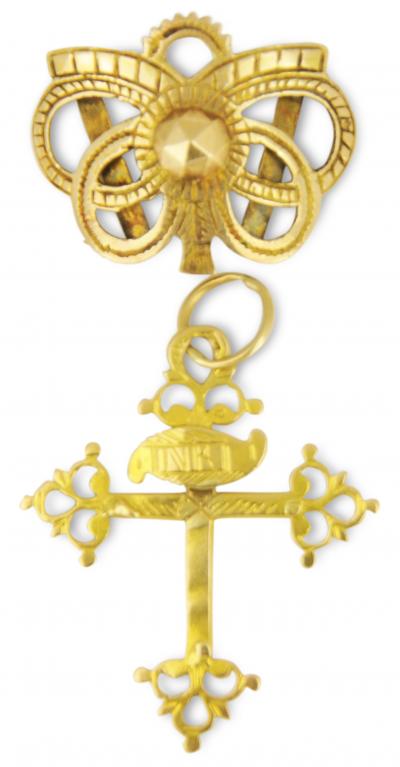
Dauphinoise cross with a
slider from Val d'Arly, gold
(Christ missing) |
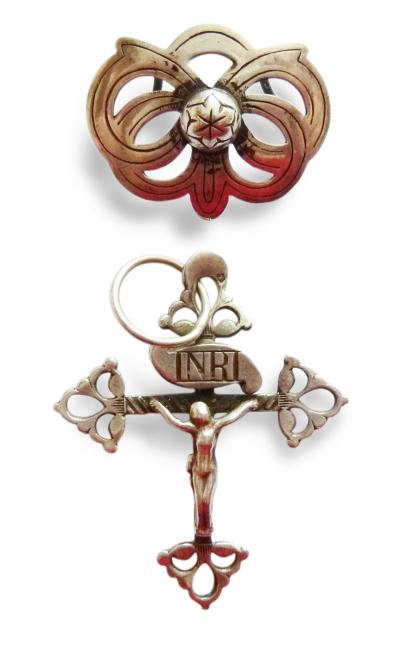
Dauphinoise cross with a
slider from Val d'Arly, gold
|
bijoux de France - French regional jewelry - Antique jewelry

"Dauphinoise" grille cross in gold
|
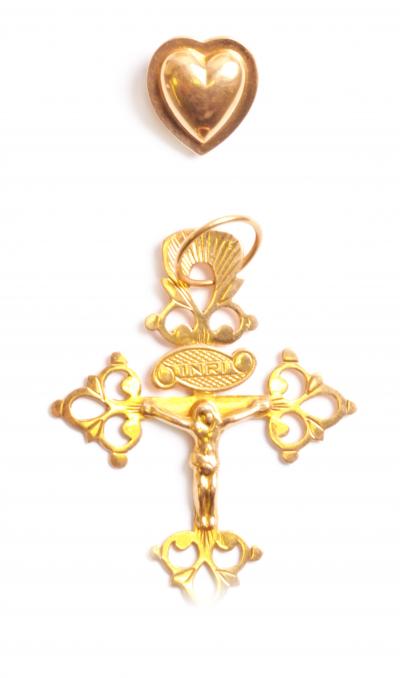
"Dauphinoise" grille cross in gold with its slider
|
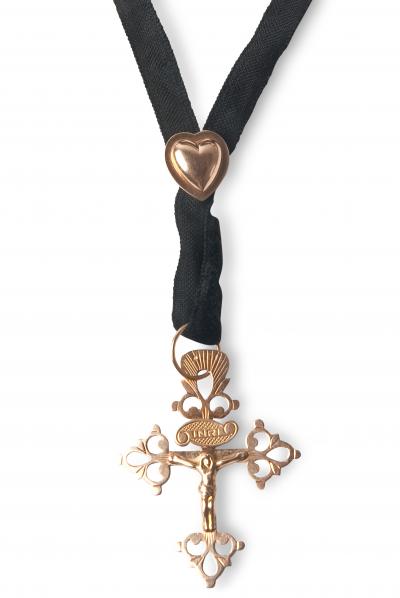
Dauphinoise grille cross with its slider, gold
|
bijoux de France - French regional jewelry - Antique jewel
The flat baton cross
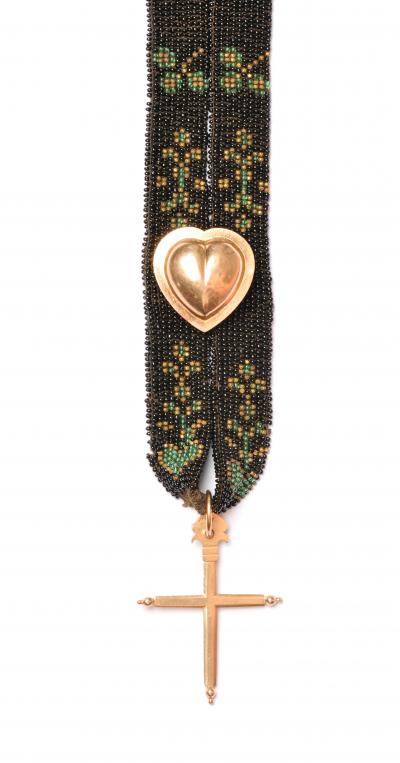
Flat baton cross from Savoy with its slide on a pearled ribbon from Bourg Saint Maurice, gold
|
|
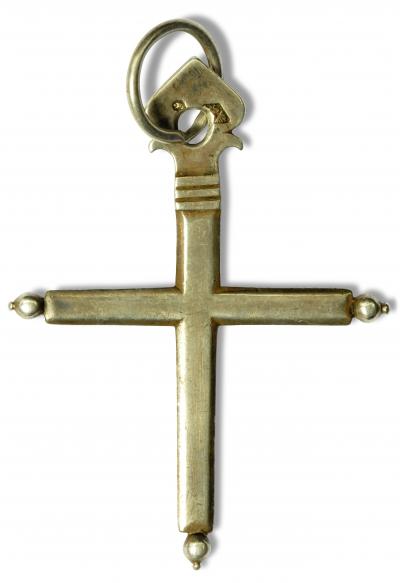
Flat baton cross from Savoy, silver |
|
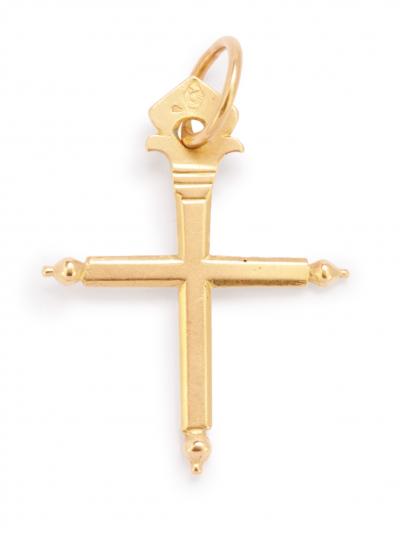
Flat baton cross from Savoy, gold |
|
Flat baton cross from Savoy in gold with an eagle's head Sardinian hallmark and the sun hallmark from Chambéry
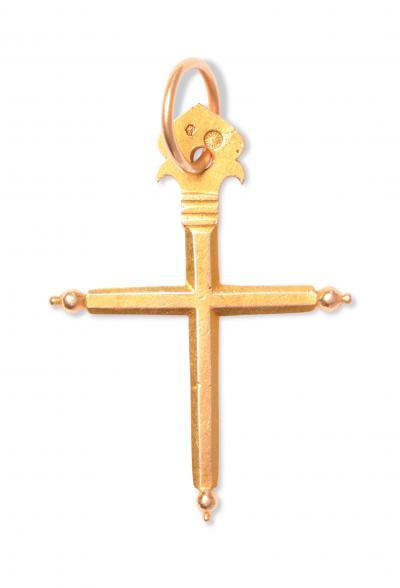
Flat baton cross from Savoy, gold
The Beaufortain cross
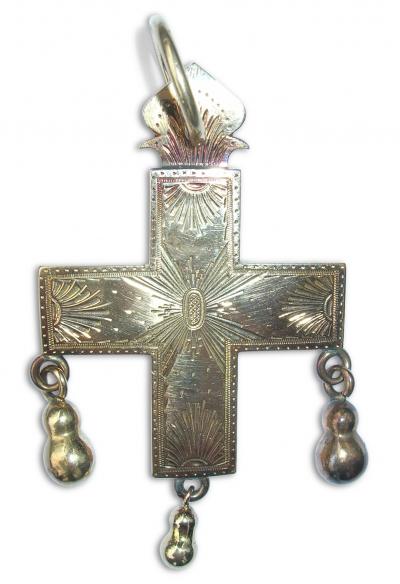
Cross from Beaufortain, silver
The Beaufortain cross is double sided and hollow with the arms being all almost the same length. One side is engraved with flowers and the INRI acronym, the other with rays. The cross is embellished with three pendants each made of two spheres soldered together. The heart-shaped slide has a border cut out with points.
|
|
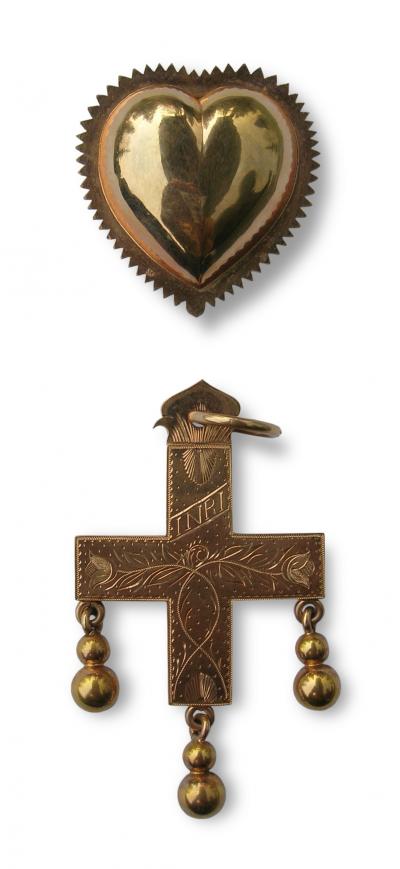
Beaufortain cross with its slider, gold
|
|
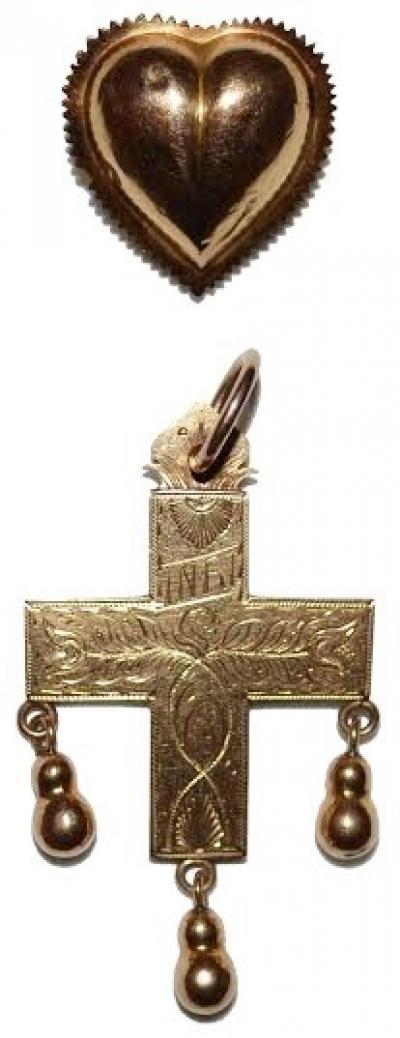
Beaufortain cross with its slider, gold
|
|
The Valloire cross
|
|
|
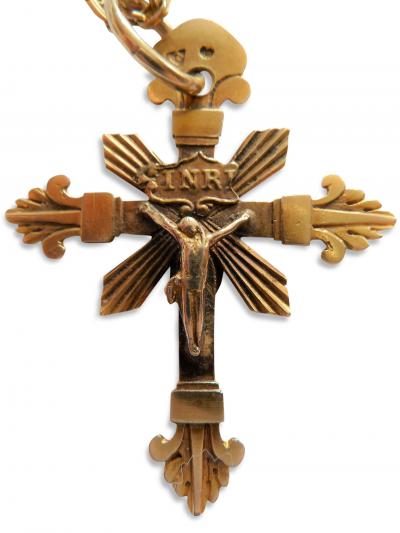
Valloire cross with its original chain |

cross from Valloire, Savoy, gold
|
|
Valloire crosses, gold
The Valloire cross has Christ on one side, Mary on the other and is distinguished by the rays emanating from the centre of the cross. The arms are tipped with a fleur-de-lys motif. On some crosses there are three groups of seven little spheres around Mary that are perhaps reminders of the stars on the cross of the Valloire church in Savoy. Popular in the Savoy region, the Valloire cross was produced and worn in Champagne, Paris and the east of France and appears to be found only in gold.
bijoux de France -
French egi
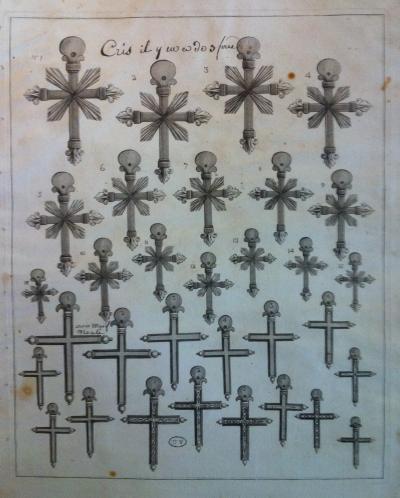
Valloire and flat crosses in the catalogue by the manufacturer Baudot, Paris, Empire period
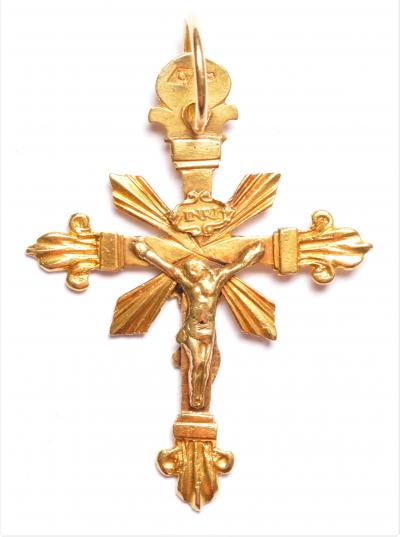
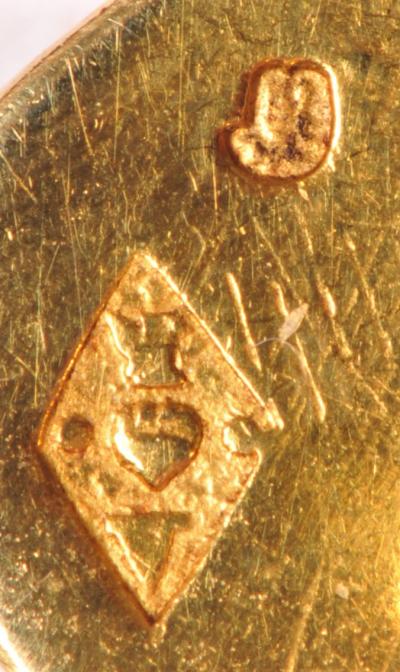
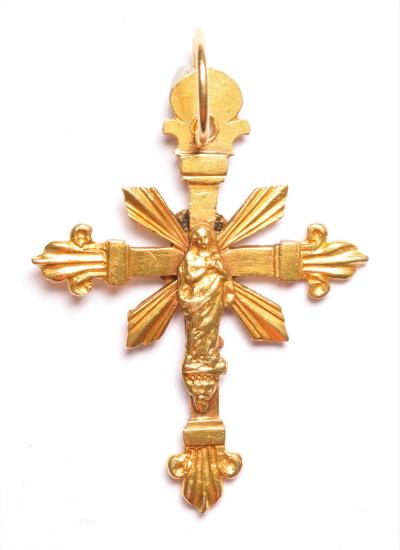
croix de Valloire en orValloire cross in gold, modern copy
onal jewelry
bijoux de France - French regional jewelll
|
|
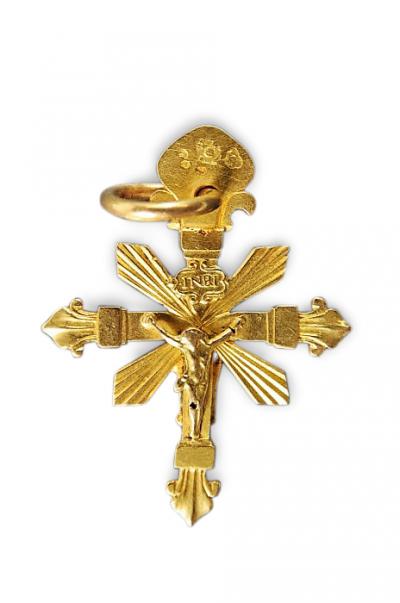
croix de Valloire |
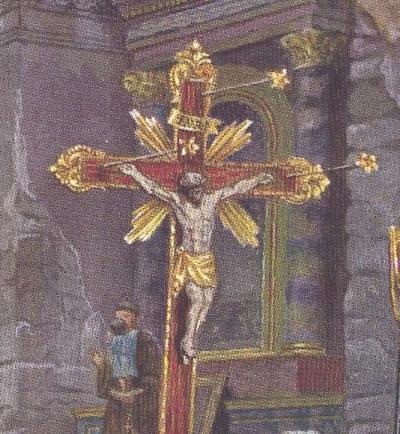
croix de Valloire |
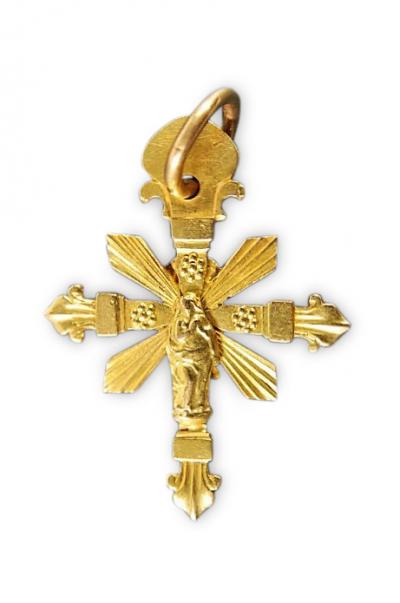
croix de Valloire |
|
Valloire cross - it's interesting to speculate that the three stars on rods that we see protruding from the large cross in the church of Valloire
(see engraving above) may well be the origin of the three groups of spheres on the Mary side of the gold Valloire cross shown here.
The large Villards flat cross
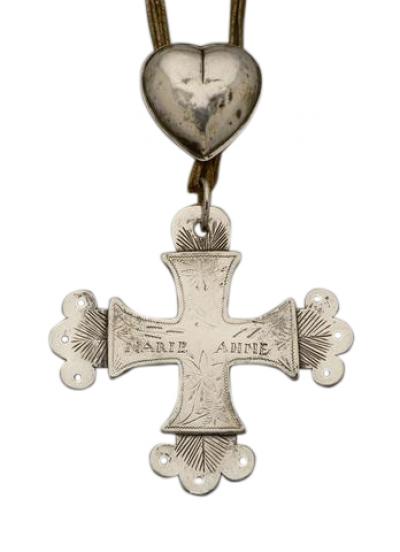
Large type I "des Villards" flat cross with its heart-shaped slider and original ribbon, silver
The flat Villards cross is the oldest of the Savoy crosses and one of the largest, measuring, up to 15cm in diameter. Flat and hollow, always in silver, the cross is engraved with symbols of the passion and acronyms and sometimes the name of the owner. The type I cross has the form of a Maltese cross with the arms ending with sharp corners and a clover motif, pierced with three round holes. The type II cross has more rounded corners and a flower-shaped motif at the ends pierced with three tear-shaped holes. Both crosses are sometimes found on cords decorated with beads. The slides are simple hearts without decoration and a flat border sometimes cut out in a scalloped motif. The type III cross is similar to the type II but with the addition of a Holy Spirit motif.
Always kept brightly polished by the wearers, you can see some photos of villagers wearing them below, which will give an idea of their size.
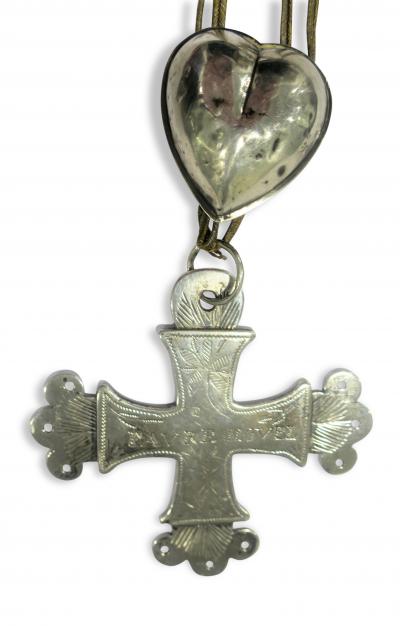
Large type I "des Villards" flat cross with its heart-shaped slider and original ribbon, silver
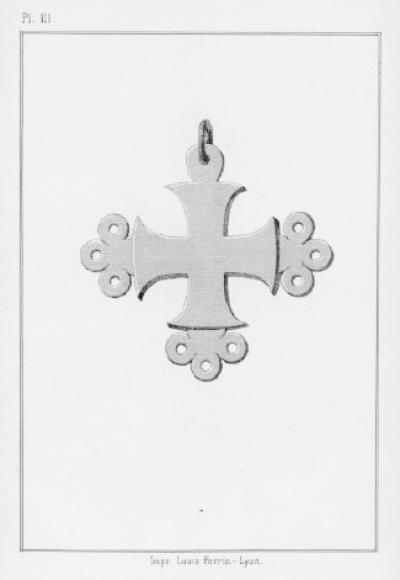
Very early type I "des Villards" flat cross, engraving from the article by Laurent Sevez, 1862, courtesy of BNF (3)
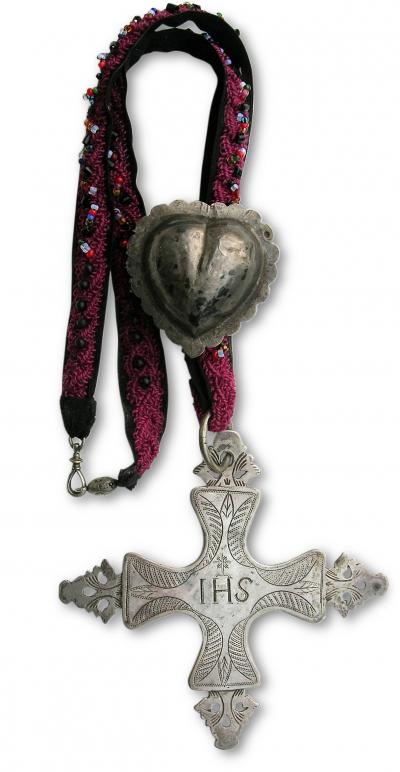
Large type II "des Villards" flat cross with its heart-shaped slider and original beaded ribbon, silver
bijoux de France -
French
gional jewelry - Antique jewel
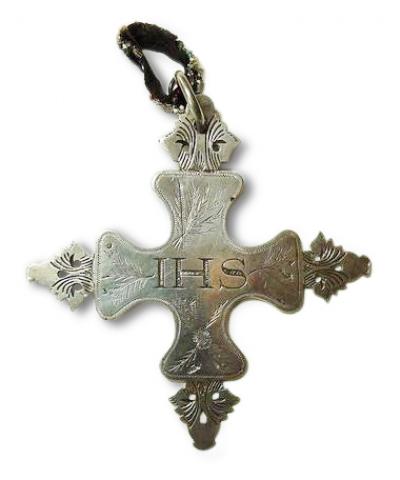
Large type II "des Villards" flat cross, silver
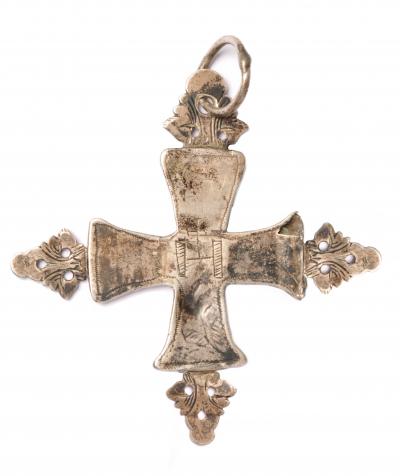
Large type II "des Villards" flat cross, silver
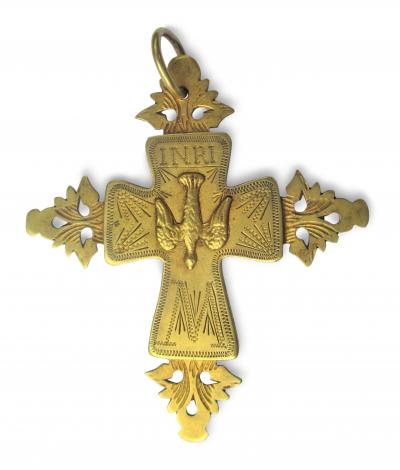
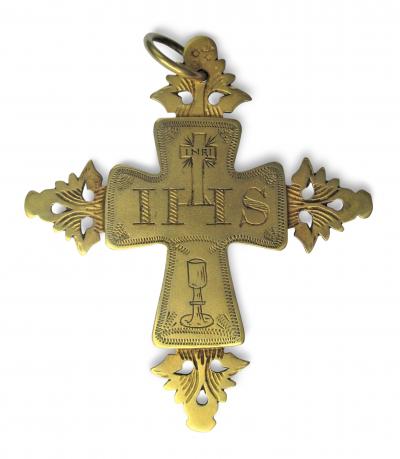
type III "des Villards" flat cross, silver gilt, note the Holy Spirit motif
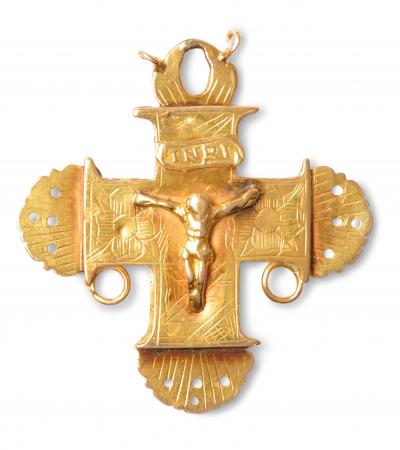
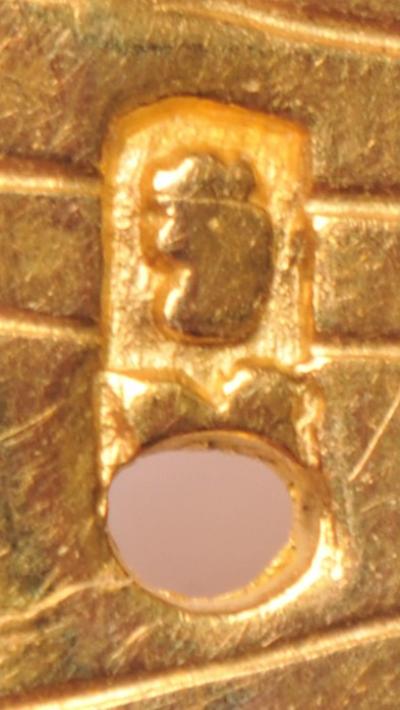
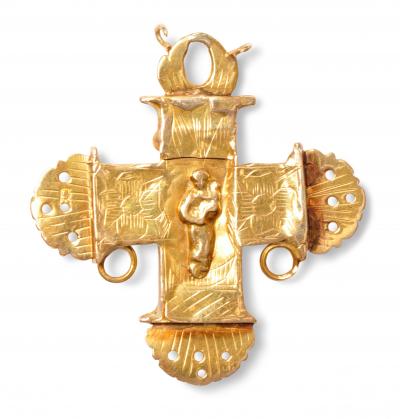
a small gold cross very similar to the type I Villards flat cross, however it is attributed to Beaufort by Paul Bisch, awaiting confirmation....... (9)
The large Villards grille cross
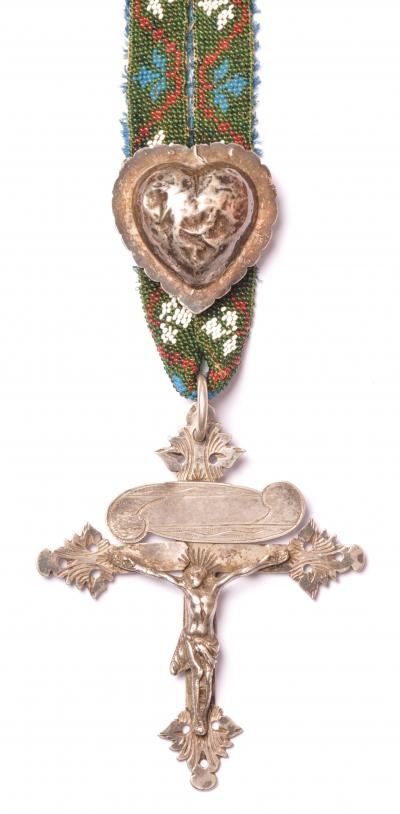
Large Villards grille cross in silver with its original beaded ribbon
The large grille cross from Saint Colomban des Villards, more recent than the flat cross and also always made of silver, is very similar to the grille cross from Chambéry. It is however very much larger, up to 15cm wide and generally engraved with the name of the owner instead of INRI.
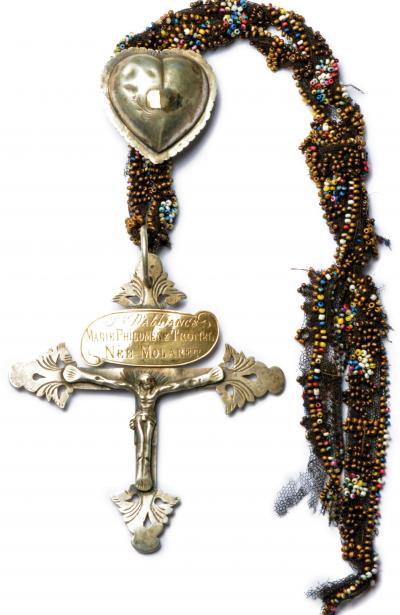
Large Villards grille cross in silver with its original beaded ribbon
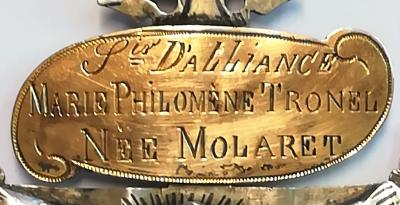
Large Villards grille cross in silver - engraved "Souvenir d'alliance Marie Philomène Tronel née Molaret"
|
|
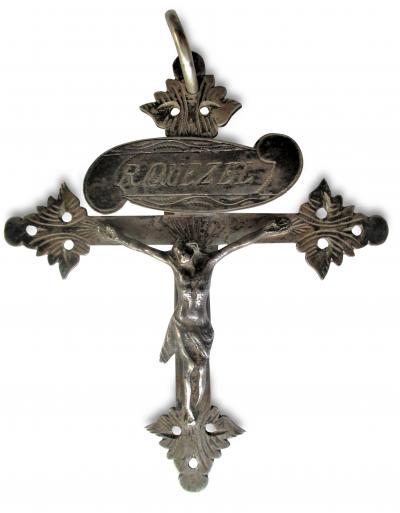
grande croix plate des Villards, argent
|
|
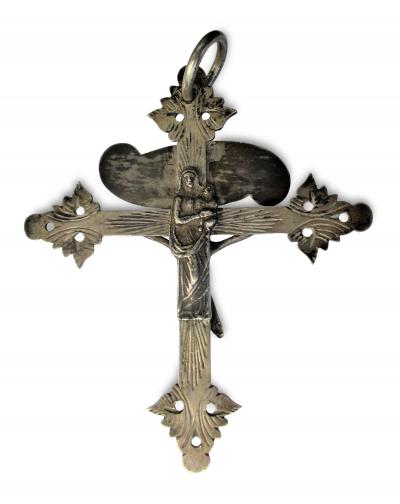
grande croix plate des Villards, argent
|
|
Large Villards grille cross in silver
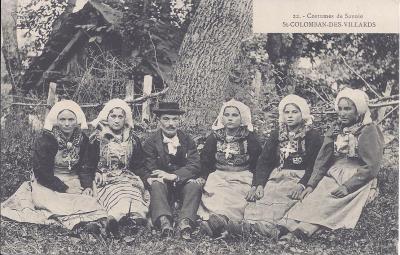
Saint Colomban des Villards - grille crosses on the left and flat crosses on the right, all very large.
bijoux de Fr
ance
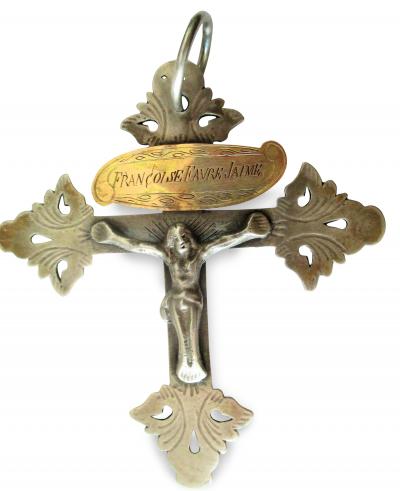
large Villards grille cross in silver
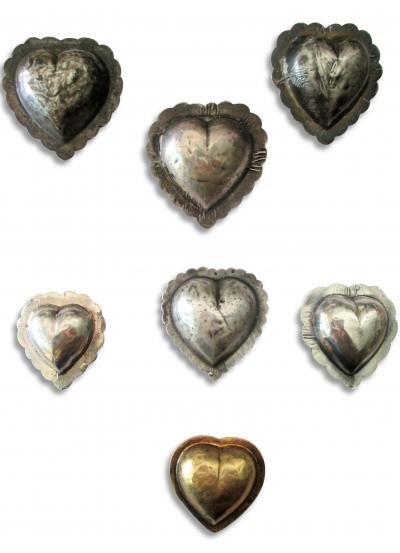
selection of Savoy silver sliders
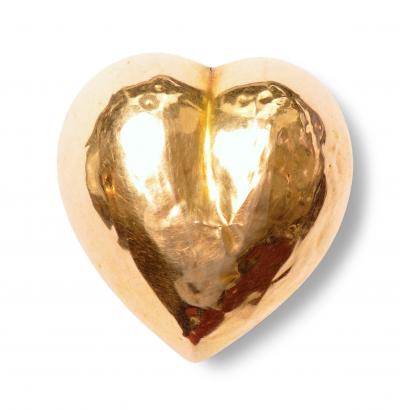
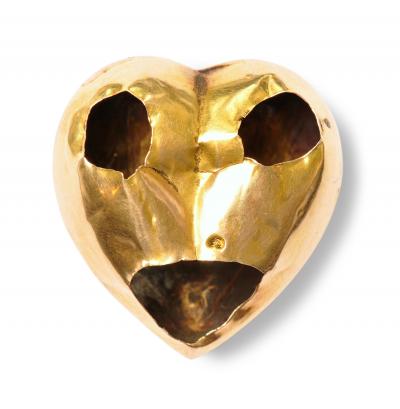
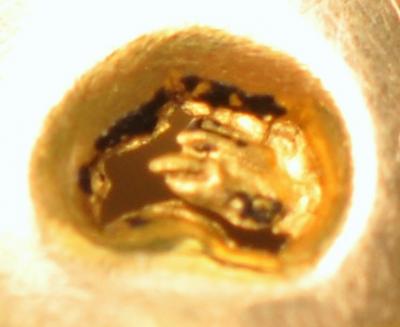
Savoy slider in gold
The baton cross
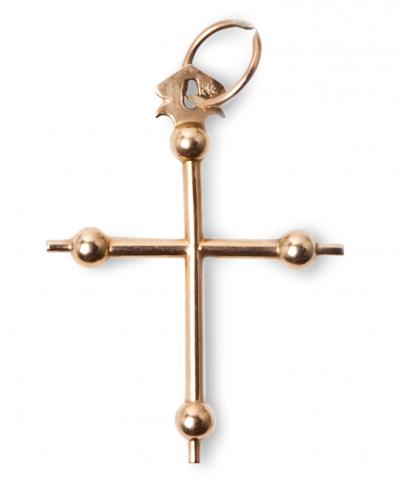
baton cross in gold
- Fr
nch regional jewelry - The flowered crossAntique jewelry
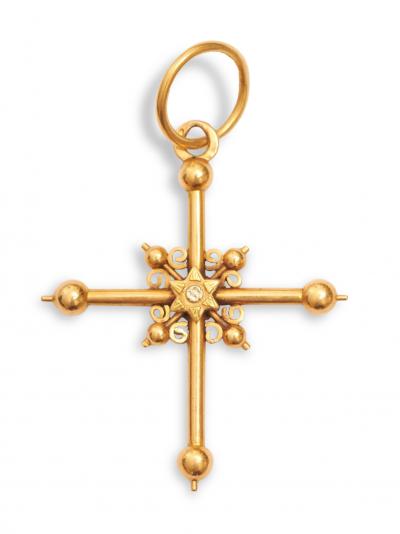
fleurie (flowered) cross from Savoy, gold |
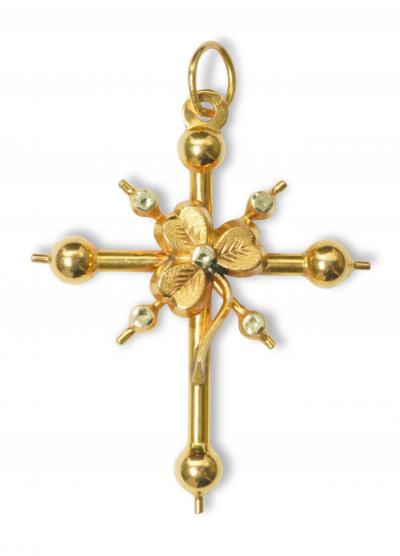
fleurie (flowered) cross from Savoy, gold |
Fleurie (flowered) crosses from Savoy, gold
Although some very old flowered crosses are known, dating from the Sard period, most are more recent, having been re-introduced by the Sainson family of jewelers in Grenoble around 1880. The design is based on a baton cross which has an embellishment at the centre. A few examples based on a flat cross are known and appear to be the older versions.
|
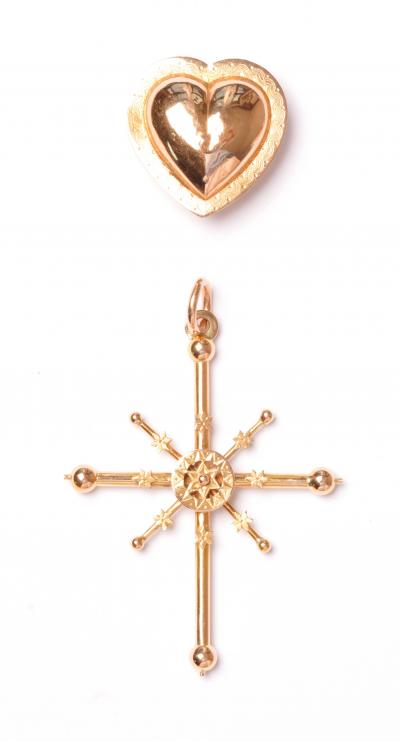
flowered cross from Savoy in gold, recto
|
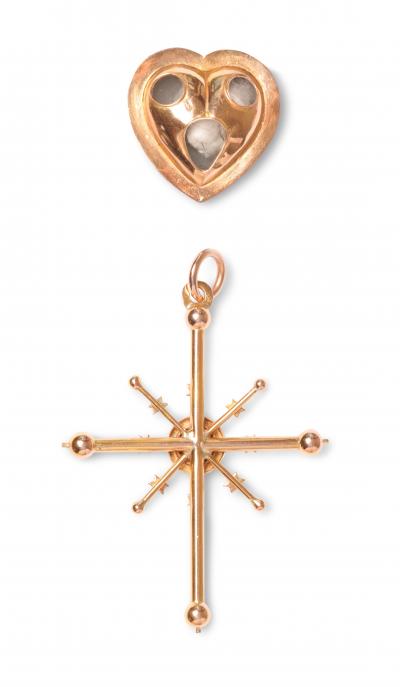
flowered cross from Savoy in gold, verso
|
The gemstone cross or diamond-cut cross
|
The gemstone or diamond cut cross is articulated and suspended from on a Turin bow-shaped slide exists with one and also with five cabochons on the Turin bow. The two varieties are illustrated on the right.
The artist André Jacques describes this cross thus - ".... the Bessans cross is made up of six very large and protruding cabochons, cut with facets in diamond point and surrounded by a circle of gold pearls: the central cabochon is connected to the others at the crossroads by four fleur-de-lys. The cross is suspended by a hinge with a richly decorated motif with many small openwork scrolls around a cabochon similar to that of the cross, but much smaller. This intermediate motif is itself articulated with a large bow also in gold. In the center of the bow is a large cabochon surrounded by pearls, from which project four elegant jets of openwork filaments and skillfully distributed in tournaments. The overall effect of this jewel is truly sumptuous. This cross is the richest we have in Savoy." (11)
These crosses were worn in the Maurienne and Piedmont regions.
|
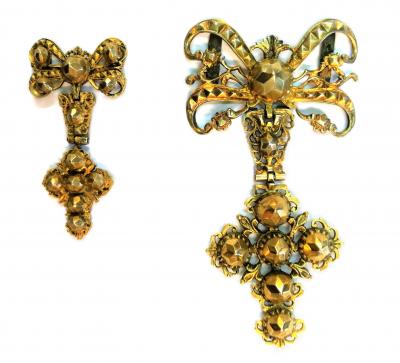 |
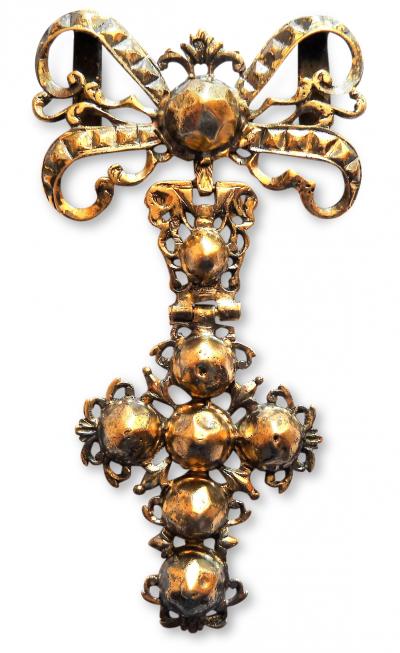 |
|
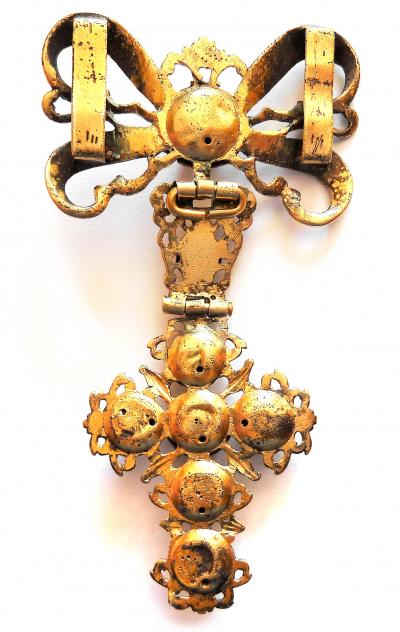
|
|
Maurienne cabochon cross with a Turin knot slide in silver gilt

Maurienne cabochon cross in silver
The Bessans cross or "ace cross"
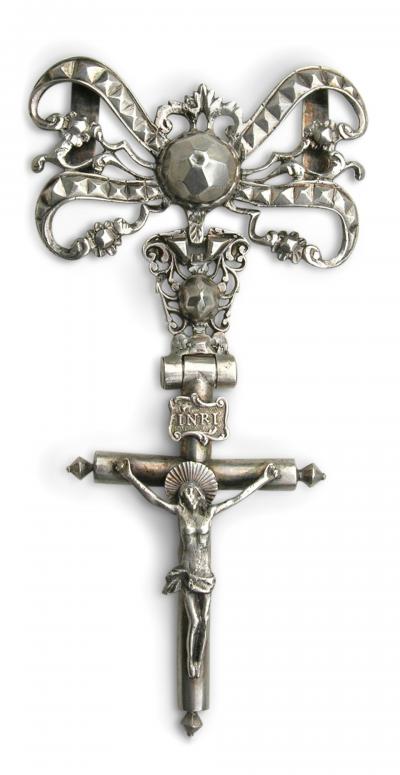
Bessans cross or "As cross", in silver, Turin, 1824
The Bessans cross or ace cross, cruiss à l’aoss takes its name from the slide decorated in its centre with a single cabochon in relief (like the ace of a deck of cards). The arms of the cross are tubular with pointed finials and it carries a haloed Christ. This cross is worn at Bessans and at Lanslebourg, high up near the throat and tied by a necklace of twisted silk ribbon, generally of a light color. (11)
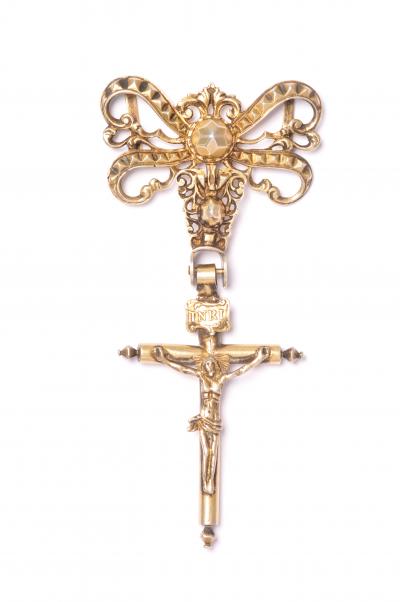
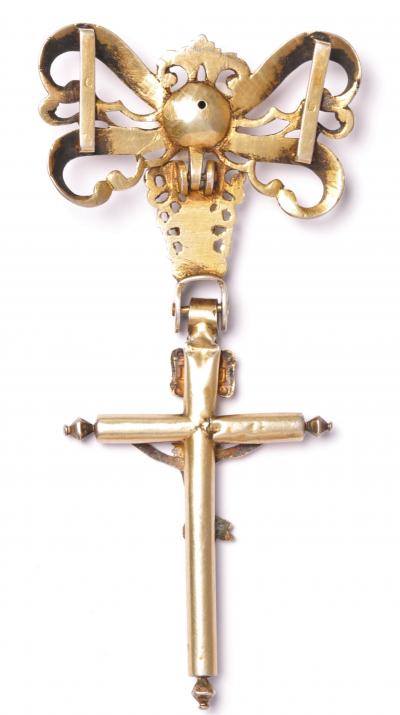
Bessans cross or "As cross" in silver, Turin
The Tignes cross
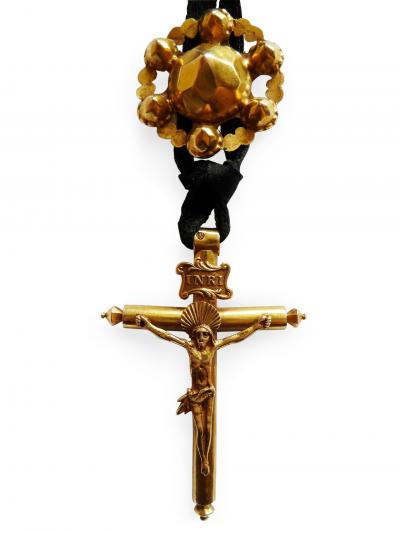
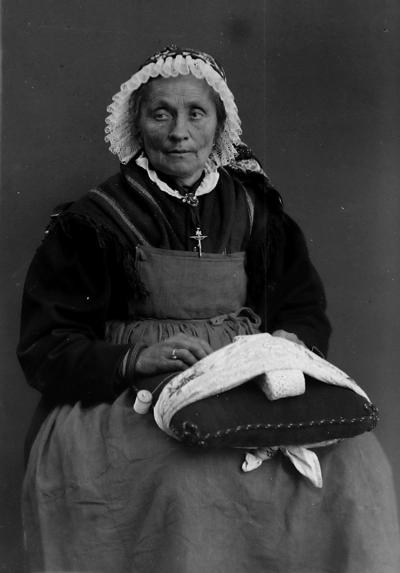
Tignes cross with its slide
The Tignes cross is a variation of the "Bessans cross", and is found in the valley of Tignes. It's always in gold and lacks the bow-shaped slide and the hinged element found between the slide and the cross. As with other crosses, it's not always found with a slide.
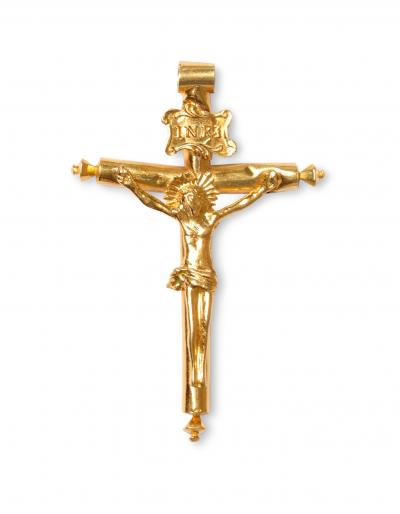
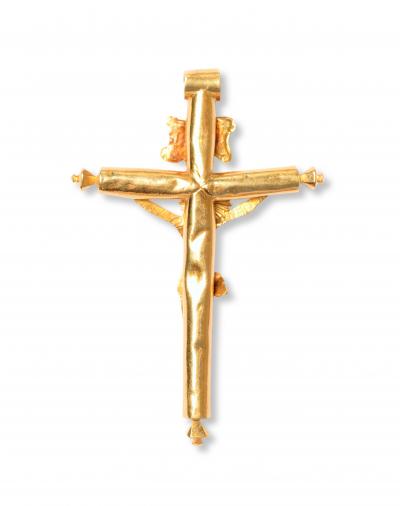
Tignes cross in hollow gold
Other crosses
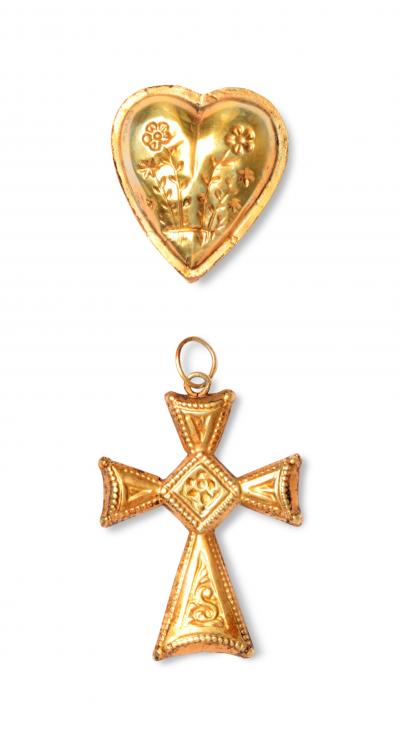
Biface cross in vermeil (gold on silvber)
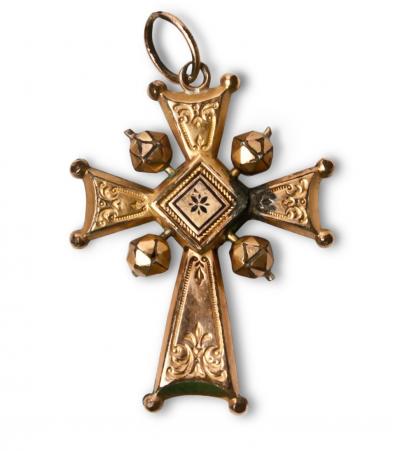
Biface cross with facetted spheres, gold plated
The five crosses shown above were all made in Paris, and while they were certainly worn in Savoy, they aren't unique to this region, as one finds them pretty well everywhere in France.
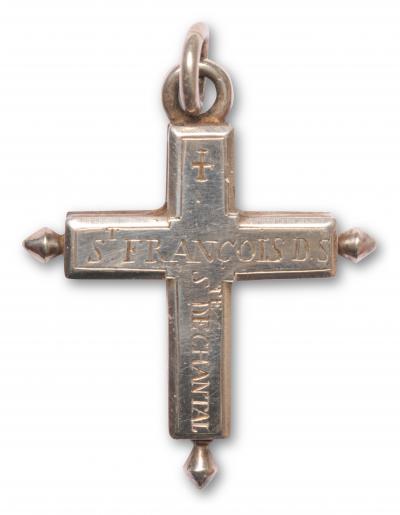
silver reliquairy cross from the Ordre of the Visitation
engraved with the names of Saint François de Sales and Sainte Jeanne-Françoise de Chantal, fonders of the order in the town of Annecy
The Jeannette cross from Savoy
bijoux de France - French regio
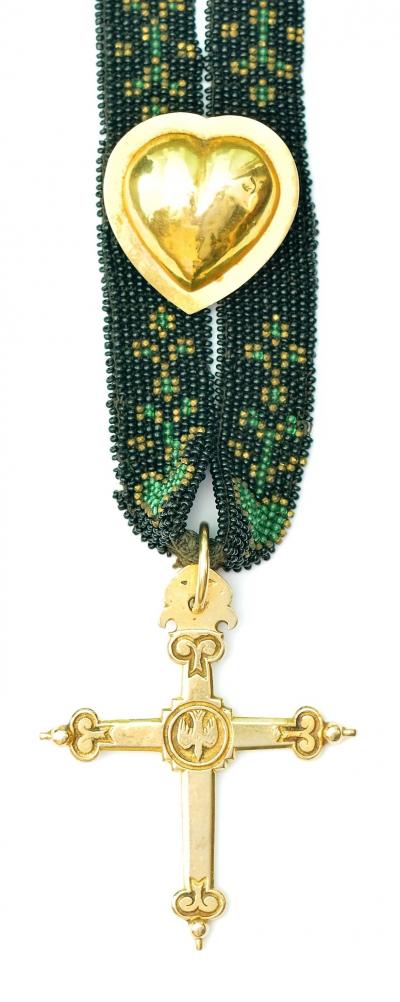
Gold Tarentaise Jeannette cross, on a beaded ribbon from Bourg Saint Maurice
Note how there is an interruption in the beaded design of the ribbon
to allow the slide to be fixed without covering any of the motifs.
nal jeweSry -
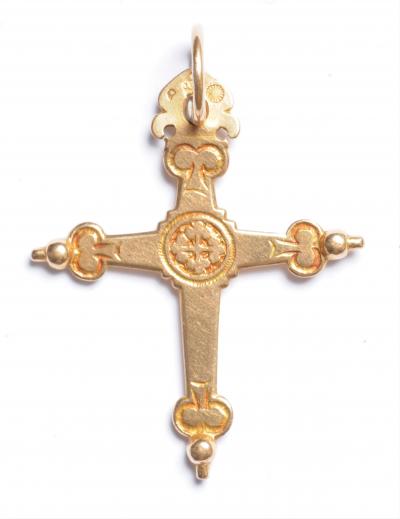
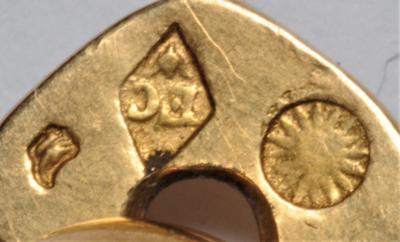
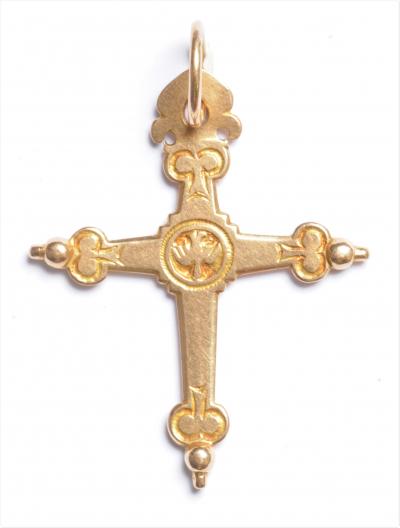
Gold Tarentaise Jeannette cross, with central motifs of the Saint Maurice cross and the Holy Spirit
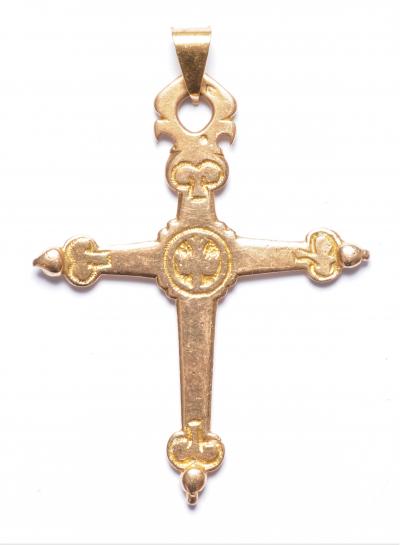
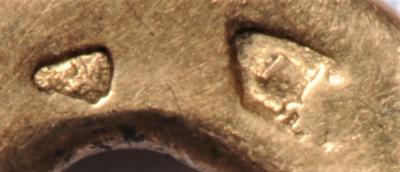
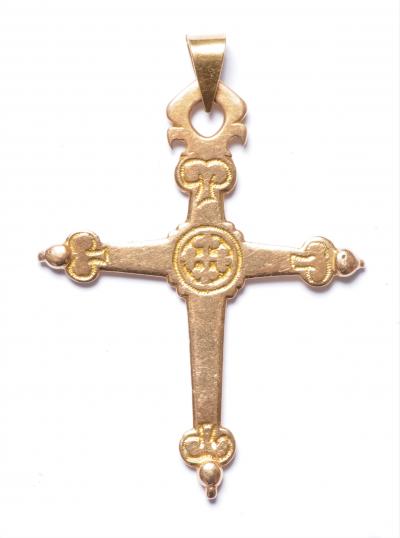
Gold Tarentaise Jeannette cross, with central motifs of the Saint Maurice cross and the Holy Spirit
Antique jewelry
|
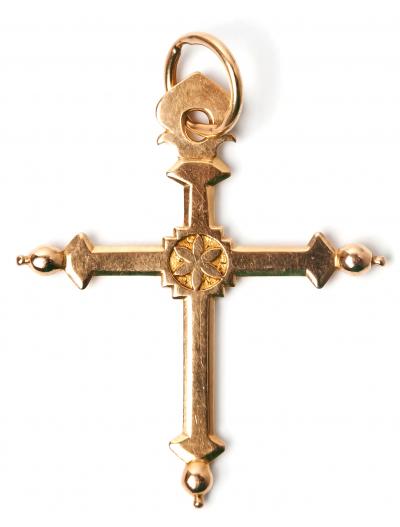
Gold Jeannette cross from Savoy
|
Although some jewellers today don't follow the convention, on the traditional Jeannette crosses from Savoy the arms become narrower along their length, unlike those from other regions of France which maintain the same width all along their length. Of course one can come across a Jeannette cross from another region in Savoy, even complete with its ribbon and slide, but if one examines the crosses one finds in Savoy as well as the old prints and engravings one notes that the convention was quite strictly observed in the past.
The engaving for the article by Laurent Sevez, published in 1862 and illustrated below, does however show the arms of that Jeannette cross to be the same width along their length, and one of the gold crosses below is the same. The cross on the engraving is virtually identical to the cross above, where one can see the difference in width is very subtle. It is possible that the artist didn't notice the difference and used a ruler to make his engraving.
Savoyard Jeannette crosses are almost always in solid gold, while Jeannettes from other regions are generally hollow.
|
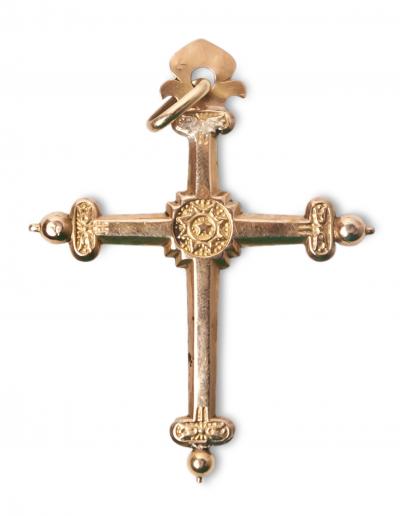
Jeannette cross, gold
|
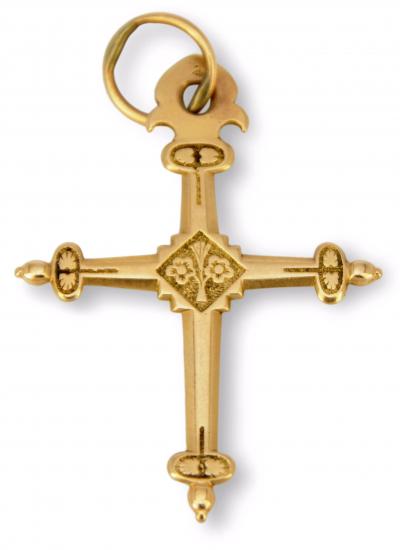
Jeannette cross from Savoy, gold |
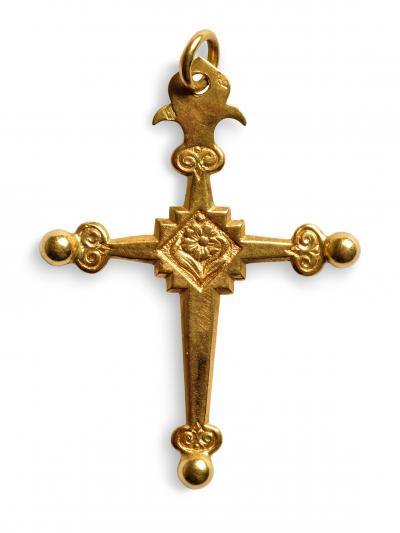
Jeannette cross from Savoy, gold
|
|

Jeannette cross from Savoy, gold
|
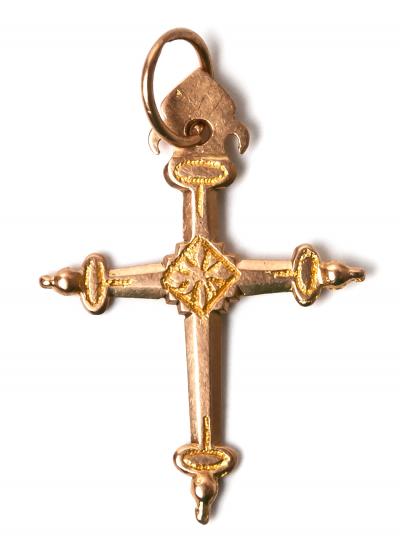
Jeannette cross from Savoy, gold
|
Jeannette crosses from Savoy, gold
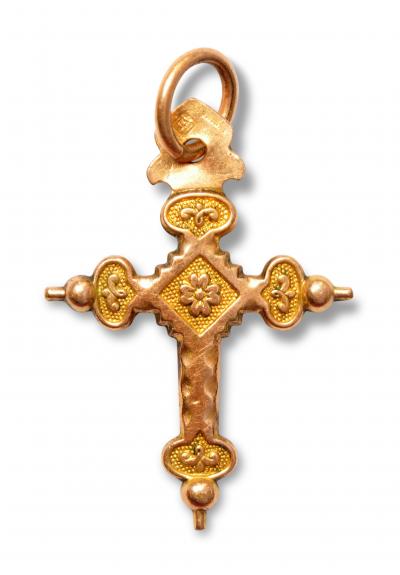
Gold-plated Jeannette cross from Savoy
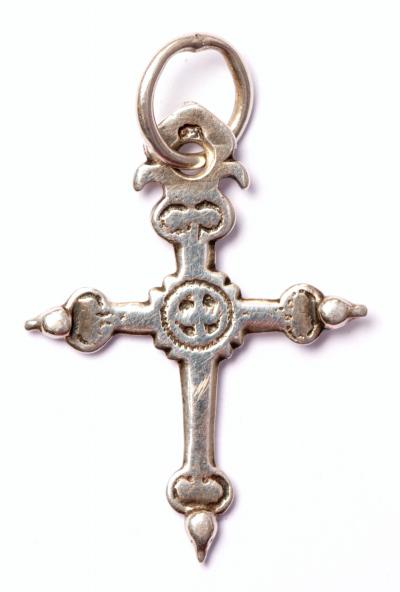 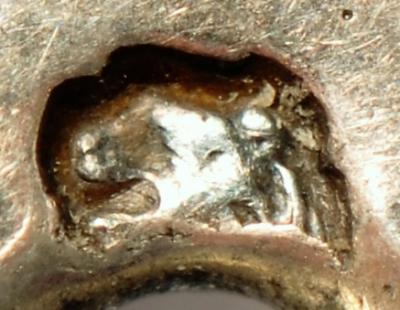
croix Jeannette alpine, or |
|

croix Jeannette savoyarde |
|
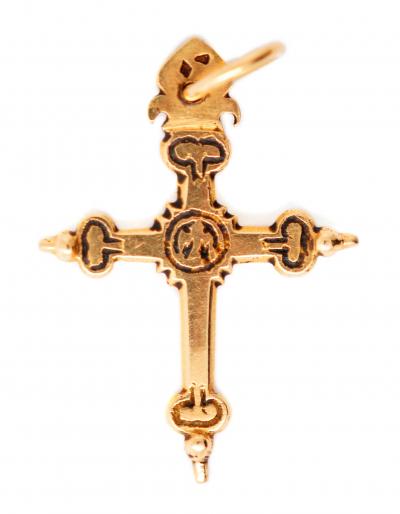
croix Jeannette alpine, or
|
Jeannette crosses from Savoy, silver and gold
croix Jeannette savoyar
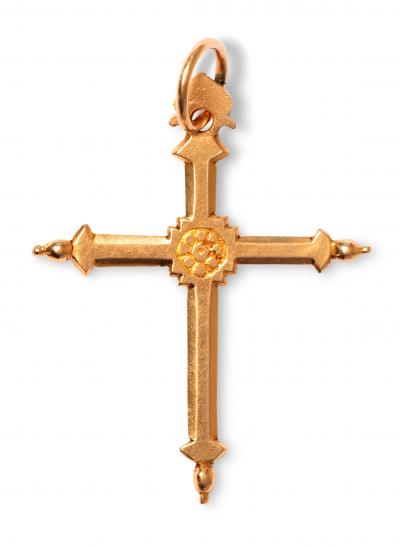
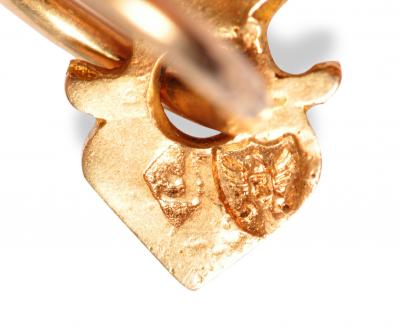
Jeannette cross from Savoy in gold with a close-up of the Sardinian hallmark
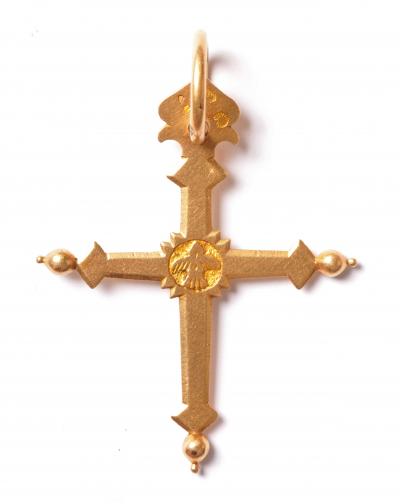
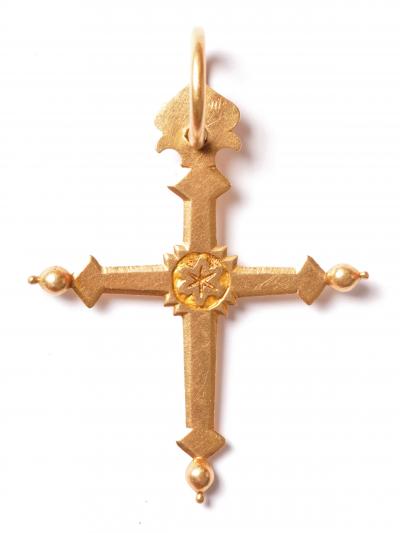
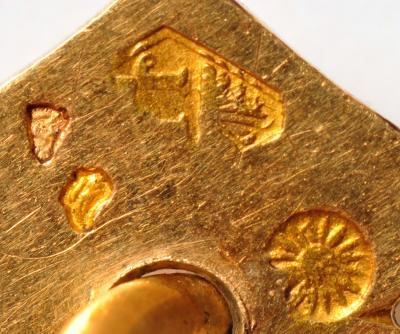
Jeannette cross from Savoy in gold, front and back view
de, or
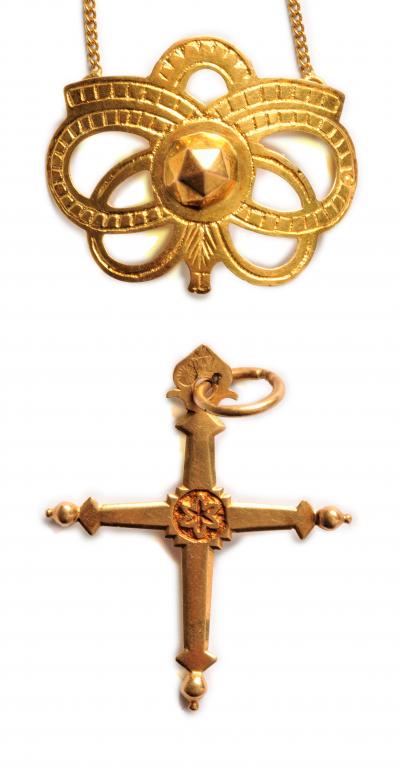
gold Jeannette cross from Savoy with a slide from the Val d'Arly
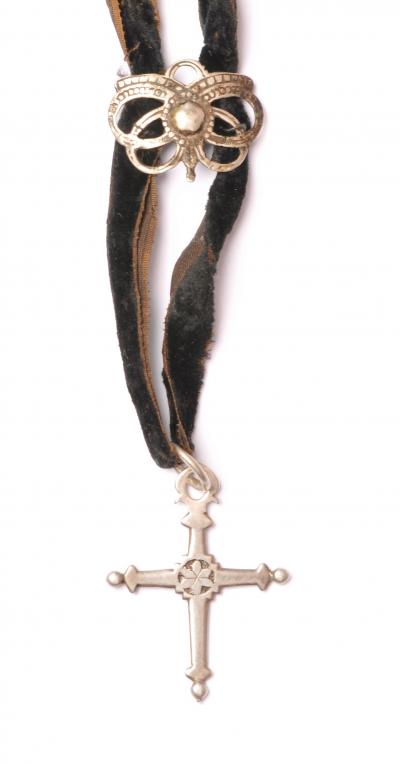
silver Jeannette cross from Savoy with a slide from the Val d'Arly
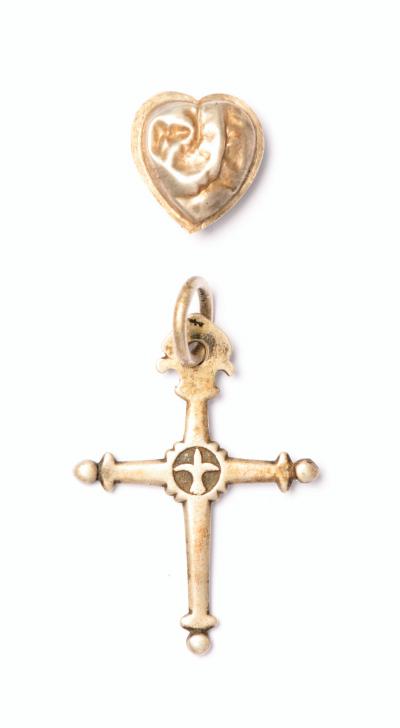
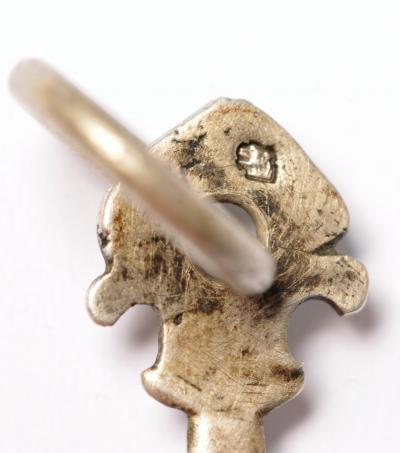
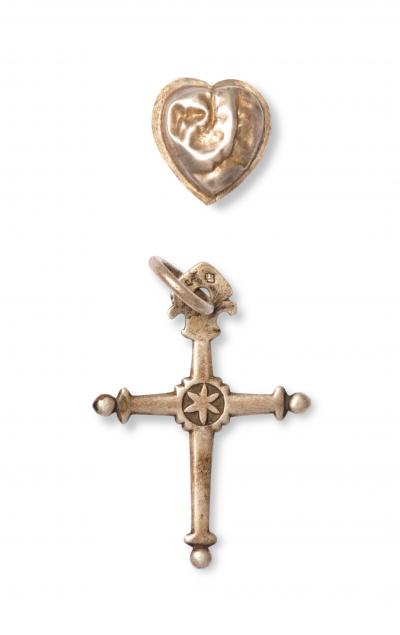
silver Jeannette cross from Savoy with its slide and a Sardinian hallmark
bijoux de France - French regional jewelry - Antique jewel
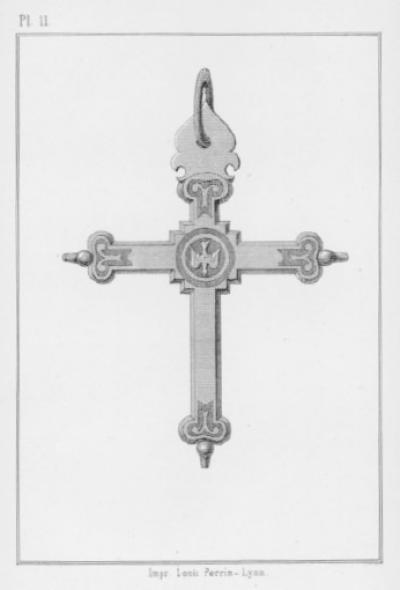
Jeannette cross, engraving for the article by Laurent Sevez, 1862, photo BNF (3)
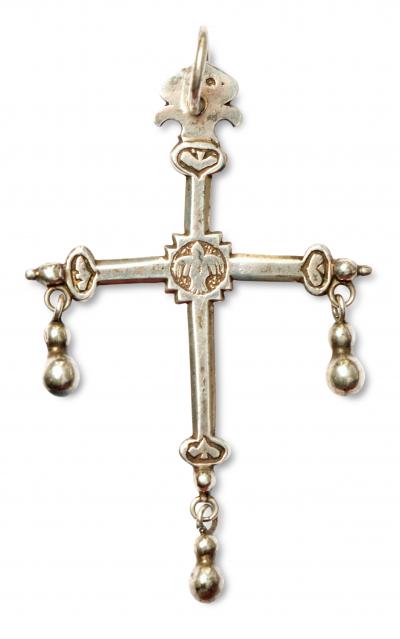
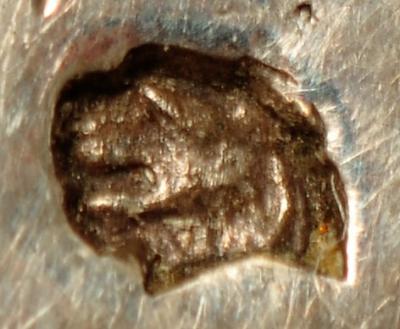
Jeannette cross in silver with tear-drop pendants, Sardinian hallmark
Savoy créole or tarine earrings
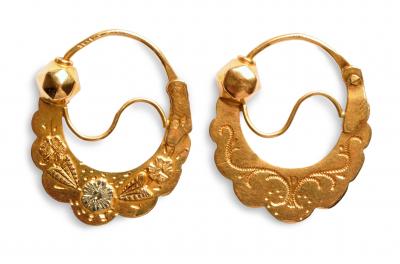
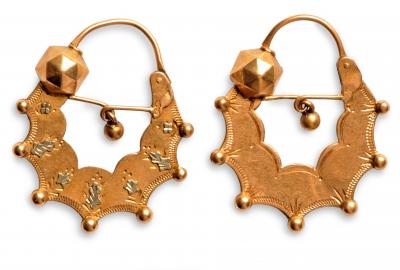
Savoy créole earrings, gold
bijoux de France - French regional jewelr
y - Antique jewelry
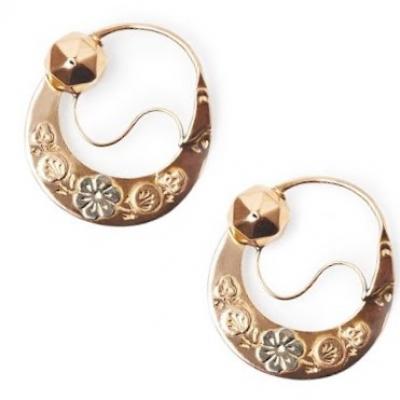
Savoy creole earrings, gold |
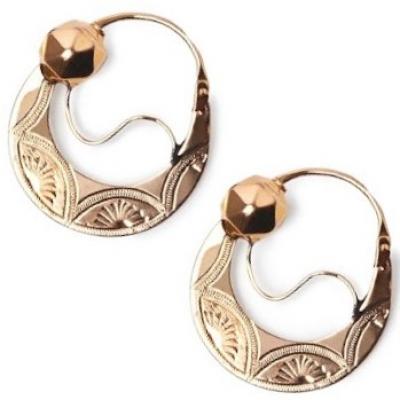
Savoy creole earrings, gol
|
|
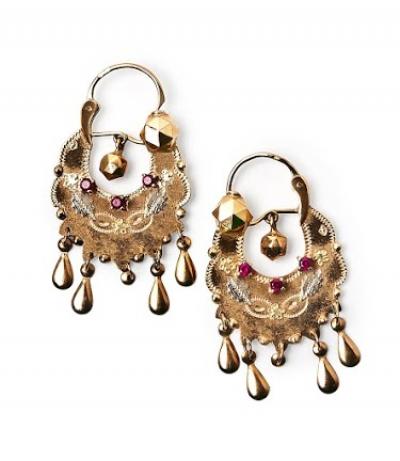
Savoy creole earr
ings, gold
|
|
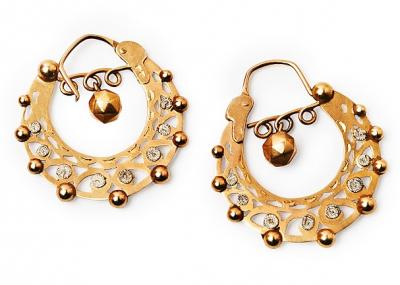
Savoy créole earrings, gold
|
|
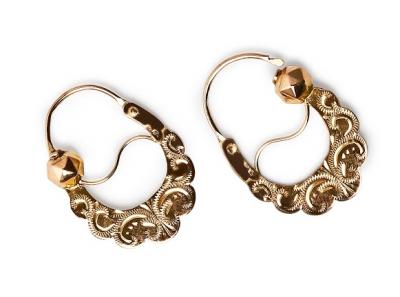
Savoy creole earrings, gold
|
|
The Savoyards (of Aix les Bains) in 1875
"As for the inhabitants, in general they seemed to me good, gentle and affable towards strangers. They have an open and frank physiognomy, and often they hide under their bonhomie a remarkable commonsense and judgment. However; it must be said that their thirst for money has deprived them of this quality which was characteristic of the Savoyard, to render service. Today we exploit the foreigner and give nothing for nothing, that is the motto of the moment. You want to see a viewpoint from my wasteland field, you pay; you need information, you pay. These people live at the expense of the bather for six months, neglecting all their work. The crops have not come in, the hay has not been cut, fruit not picked, not a problem, the bather makes me earn five or six francs a day. Another deplorable sign is the breed of begging brats cluttering, roads, streets and hotels. Men are generally well constituted, they appear strong, vigorous and hardworking Their clothing always consists of a jacket and pants in large unbleached canvas; they do not yet know the luxury of fine clothes. As for women, they are ugly, heavy and fat so that they seem older than they really are. A surprising thing is that their feet and hands are so wide and long that they could sleep upright without moving. A German alone could compete, on this point, with a Savoyard. Oh how we quickly recognize a Frenchwoman, a Parisian. As for their dress sense, they have very little, I would say none. I saw only simple Orleans dresses, cut in the fashion of the country. In terms of jewellery, each Savoyard woman has their own that they wear even during the week. It is a very beautiful Jeannette cross, in gold, held at the neck by a heart of gold passed through a black velvet ribbon. The local brats are ragged and smelly." Deny Luce 1875 (4)
|
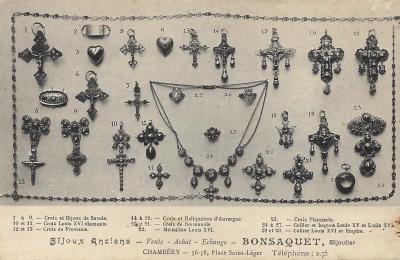
Mr. Bonsaquet from Chambéry collected and sold French regional jewels and enjoyed sharing his passion with his clients
click on the photo to see it in high resolution
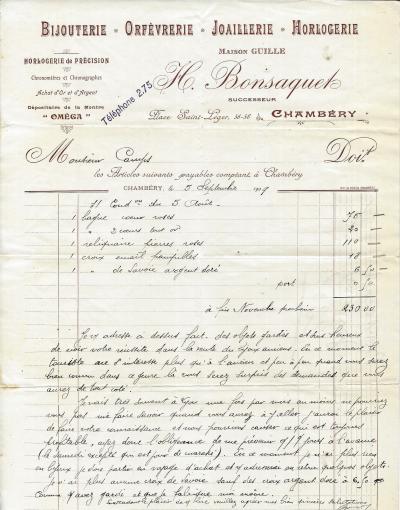
invoice dated 1909 from Mr. Bonsaquet of Chambéry to Mr. Camps of Aurillac for a delivery of regional jewellery and mentionning that he makes Savoy crosses
click on the images to view them in high resolution
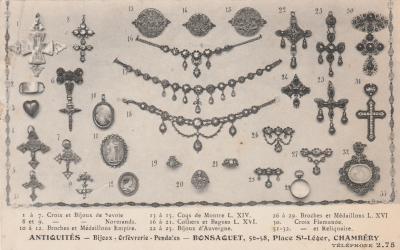
Mr. Bonsaquet from Chambéry collected and sold French regional jewels and enjoyed sharing his passion with his clients
click on the photo to see it in high resolution

publicity by Mr. Bonsaquet of Chambéry
Rustic Art in Savoie
"It took us seven or eight hours to reach a world where the costumes were two centuries old, where the pastoral life was two millennia old. I was thinking of Conan Doyle's novel where explorers lost in the heart of South America discover on a plateau sealed by an impracticable cliff "a lost world", a world of the prehistoric era.
Then, at about ten o'clock, when the first bell of the High Mass struck, we entered the church of Saint-Colomban-des-Villars. What a surprise and what a bedazzlement!
The bright, melted colors that, fallen from a stained glass window, illuminated the slabs of an old nave by the great light of the great sun, seemed to have settled on the heads and shoulders of the peasant women and children who filled the church.
But these colors had an unknown consistency, as they were those of headdresses, shawls, hats and glittering jewels.
The church was really flaming with colors; the beguines of the children, the shawls with the long fringes of the peasant women, the glittering fabrics, the chains of the corsages, all shone, all sang to the eyes.
By what miracle, in this village of St-Colombans, in all this region of Arves, less than 20 kilometers from the great railroad from Paris to Modane, near the industrialized Maurienne, this vestige bursting of the ancient peasant civilization has it subsisted; how is it that these audacious colors, these costumes of an almost aggressive archaism, are not tarnished by the smoke of the nearby factories?
It cannot be explained.
What I know is that in this evening, a Sunday in July, fourteen years ago, I felt with an unforgettable intensity, all that was originality, cheerfulness, flavour and lifeblood of the rustic art of the past, and all that rural France has lost by losing it.
And it is to fix the memory of this past that will soon die, that these notes were written."
Philippe de Las Cases, L'Art Rustique en France - Dauphiné et Savoie, 1930 (4)
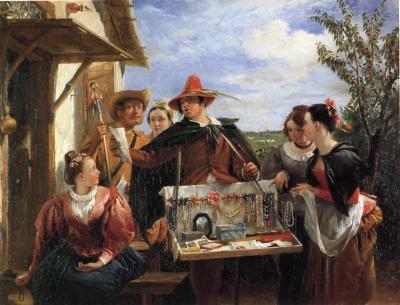
Charles Robert Leslie - The travelling jewellery salesman
Estella Canziani (1887 - 1964)
Reproductions taken from the fascinating book by Estella Canziani, "Costumes, traditions and songs of Savoy", published for the first time in 1911 and relating her regular visits with her father to the mountain villages of Savoy. (1) Estella Canziani, daughter of the English painter Louisa Starr and an Italian engineer, was an accomplished artist and fascinated by the traditional costumes, customs and folklore that were rapidly disappearing with the dawn of the 20th century. Her collection of artifacts, costumes, stories and legends together with the paintings and drawings she made are an invaluable record of the people of England, France and Italy amongst whom she lived. One hundred years after their first publication, the books of Estella Canziani are still in print and her illustrations are always sought after by collectors and historians.
bijoux de France - French regional jewelry - Antique jewelry
click on the photos and engravings to see them in high resolution
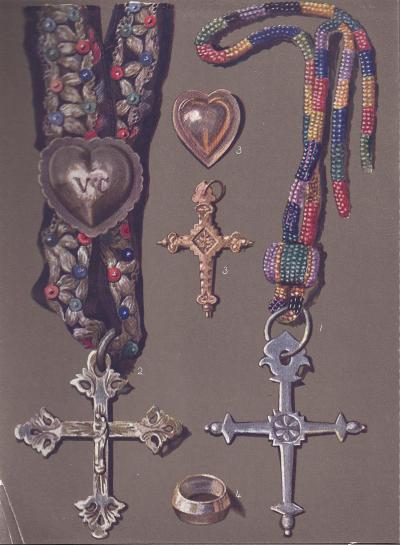
French traditional jewelry - Estella Canziani
1 - cross and porte-croix of tarantaise
2 - cross and porte-croix of Saint Jean d'Arves and of la Maurienne
3 - Cross and heart of Bourg Saint Mauriuce
4 - wedding ring of La Maurienne
bijoux de France - French regional jewelry - Antique jewelry
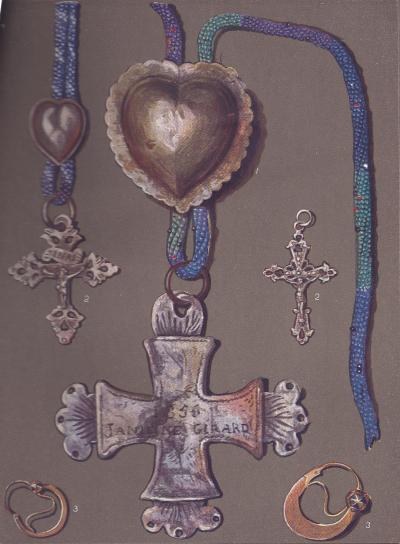
French traditional jewellery - Estella Canziani
1 & 2 - crosses and hearts (slides) worn by the peasants
of Saint Colomban des Villards. 3 - ear-rings from Tarantaise
bijoux de France - French regional jewelry - Antique jewelry
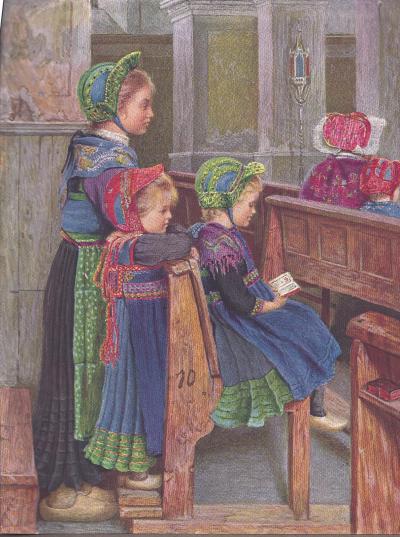
Estella Canziani - children from Saint Sorlin d'Arvres, c1909
bijoux de France - French regional jewelry - Antique jewelry
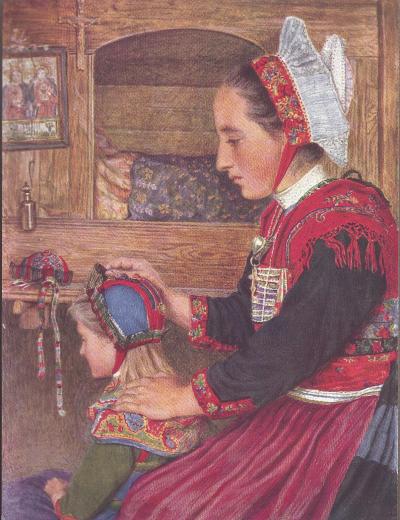
Estella Canziani - child from Montaimont, painted in 1910
bijoux de France - French regional jewelry - Antique jewelry

Estella Canziani - Sunday dress from Bourg Saint Maurice, painted 1907
bijoux de France - French regional jewelry - Antique jewelry
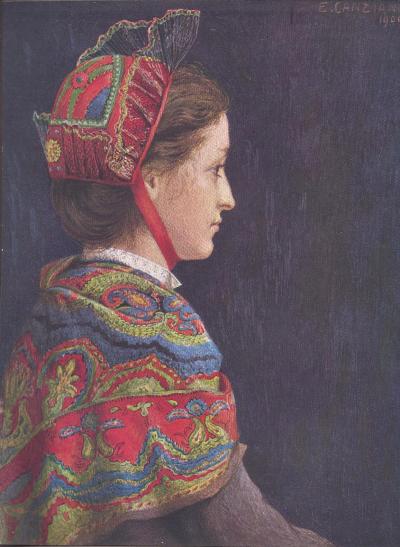
Estella Canziani - folk costume from Jarrier, painted 1907
bijoux de France - French regional jewelry - Antique jewelry
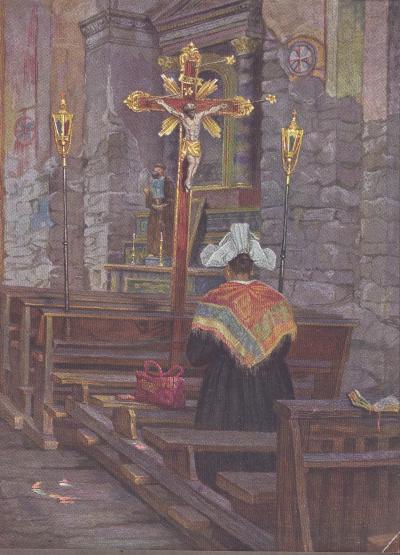
Estella Canziani - in the church of Valloire, circa 1909
bijoux de France - French regional jewelry - Antique jewelry
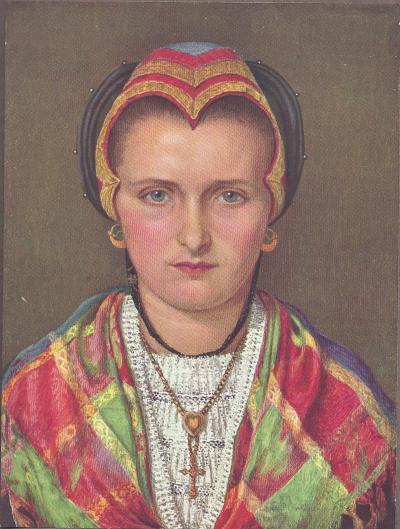
Estella Canziani - folk costume from Bourg Saint Maurice c1909
bijoux de France - French regional jewelry - Antique jewelry
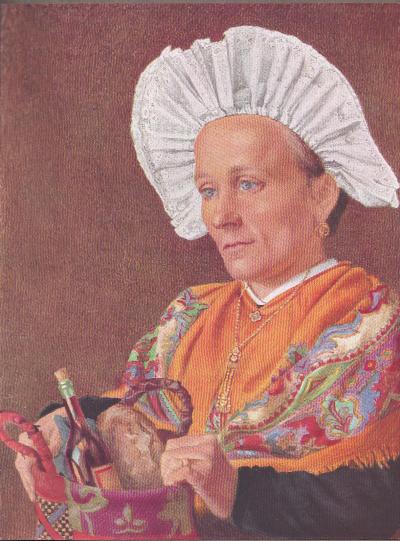
Estella Graziani - sunday dress of la Valloire, c1909
bijoux de France - French regional jewelry - Antique jewelry
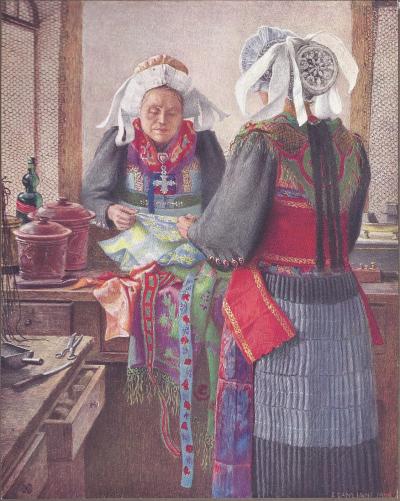
Estella Canziani - women bargaining, c1909
bijoux de France - French regional jewelry - Antique jewelry
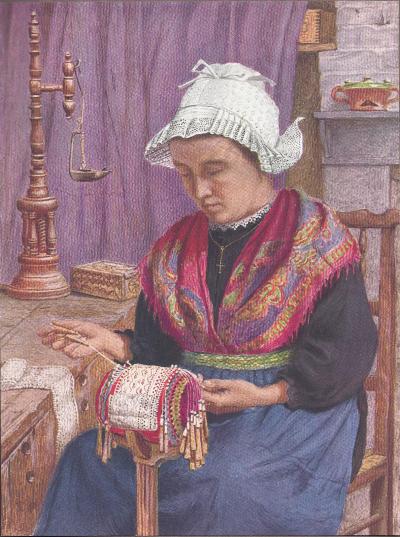
Estella Canziani - lacemaking, c1909
bijoux de France - French regional jewelry - Antique jewelry
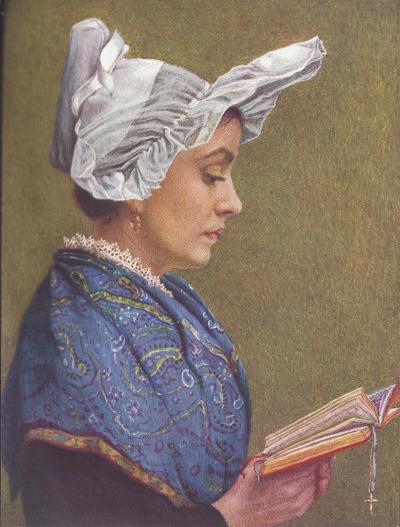
Estella Canziani - girl from La Valloire in mourning dress, c1909
bijoux de France - French regional jewelry - Antique jewelry
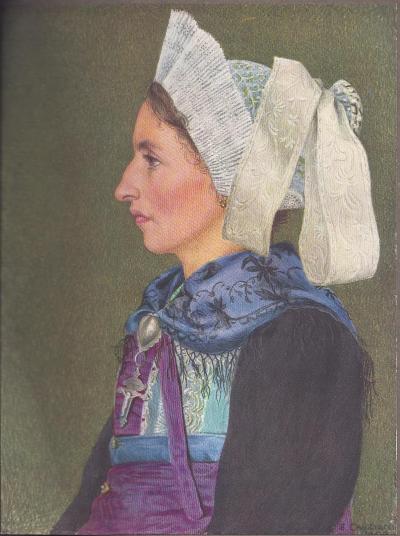
Estella Canziani - mourning costume from Saint Colomban des Villards, c1909
bijoux de France - French regional jewelry - Antique jewelry
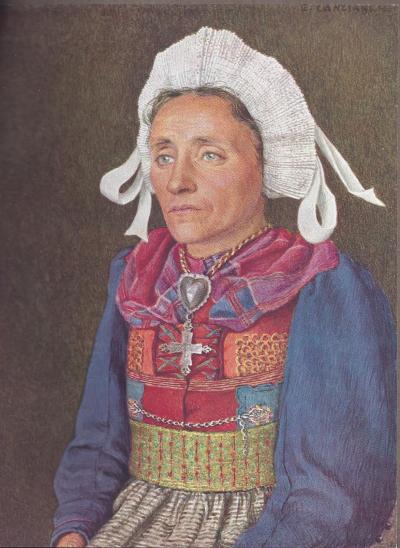
Estella Canziani - Saint Colomban des Villards, c1909
bijoux de France - French regional jewelry - Antique jewelry
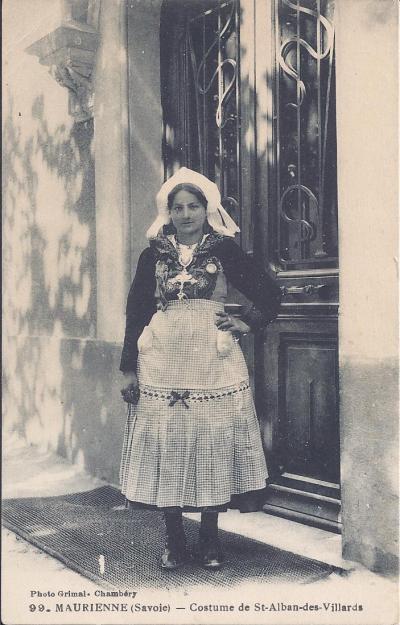
Saint Alban des Villards - note the large silver cross
(today the village has seven times fewer inhabitants than in 1906!)
bijoux de France - French regional jewelry - Antique jewelry
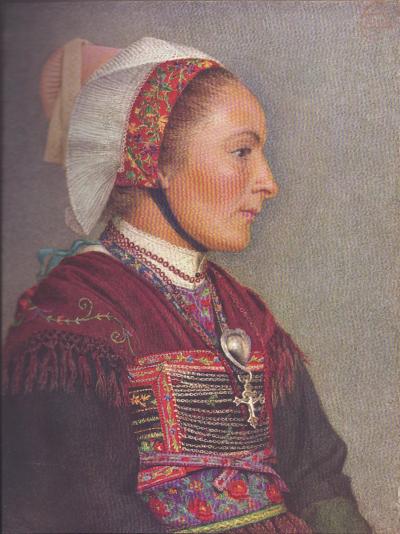
Estella Canziani : sunday dress from Saint Jean d'Arves, circa 1909
bijoux de France - French regional jewelry - Antique jewelry
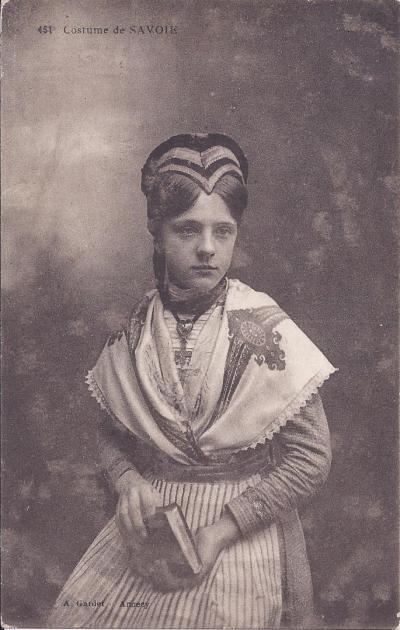
Savoy regional costume and jewellery - Beaufortain cross
bijoux de France - French regional jewelry - Antique jewelry
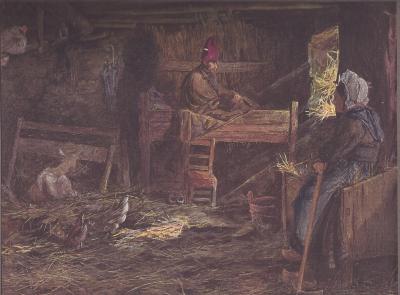
Estella Canziani - interieur used as stables, bedroom and kitchen, Savoy circa 1909
bijoux de France - French regional jewelry - Antique jewelry
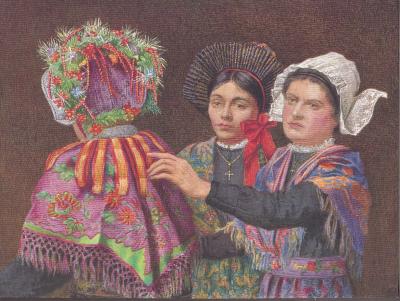
Estella Canziani - marriage cap, c1909
bijoux de France - French regional jewelry - Antique jewelry
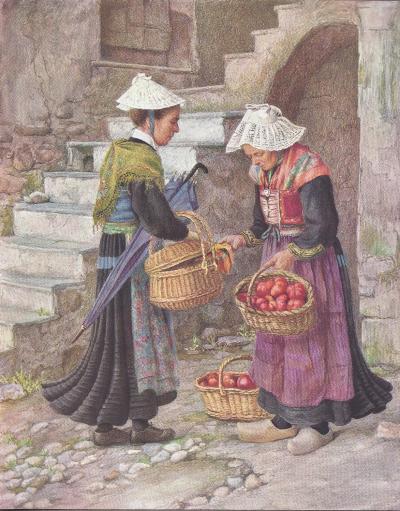
Estella Canziani - folk-dress of Foncouverte and Jarrier, c1907
bijoux de France - French regional jewelry - Antique jewelry
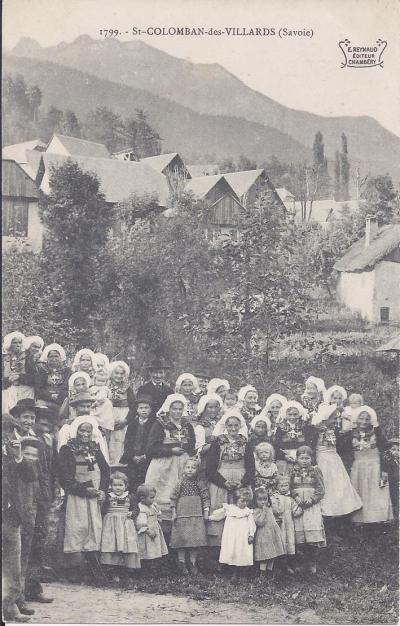
Villagers from Saint Colomban des Villards. Note the large silver "Villard" crosses,
the distinctive regional costumes (and the wary looks at the photographer!)
bijoux de France - French regional jewelry - Antique jewelry
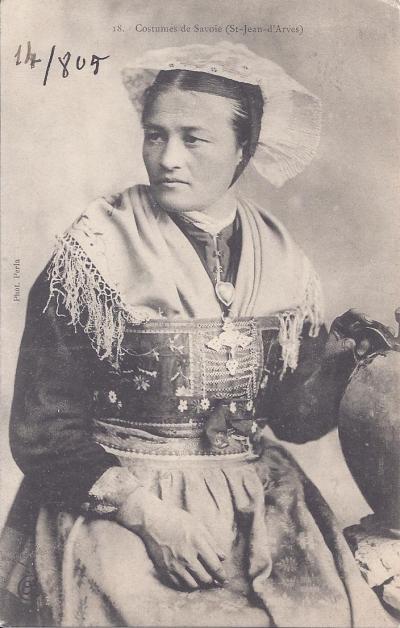
folk dress and silver cross from Saint Jean d'Arves, Savoy
bijoux de France - French regional jewelry - Antique jewelry
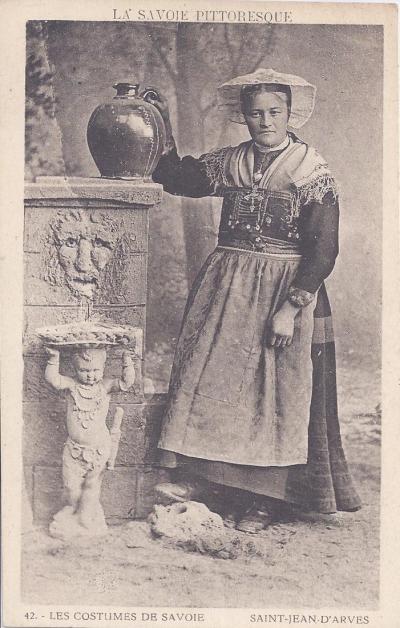
French folk dress and silver cross from Saint Jean d'Arves, Savoy
bijoux de France - French regional jewelry - Antique jewelry
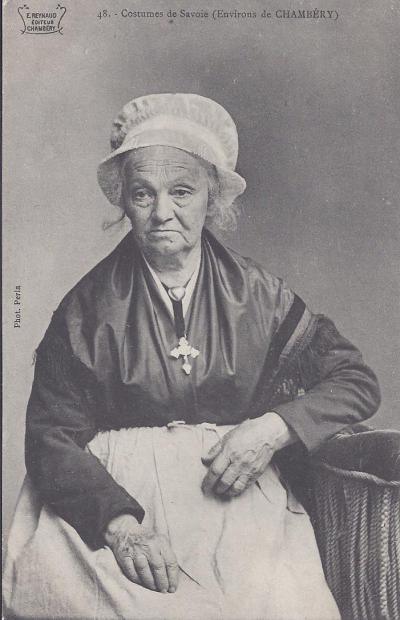
grille cross from Chambéry & regional folk dress - Savoy
bijoux de France - French regional jewelry - Antique jewelry
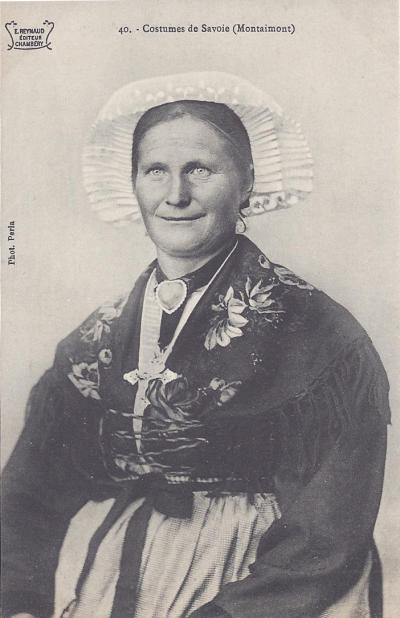
Costumes, traditions and songs of Savoy - Montaimont
bijoux de France - French regional jewelry - Antique jewelry
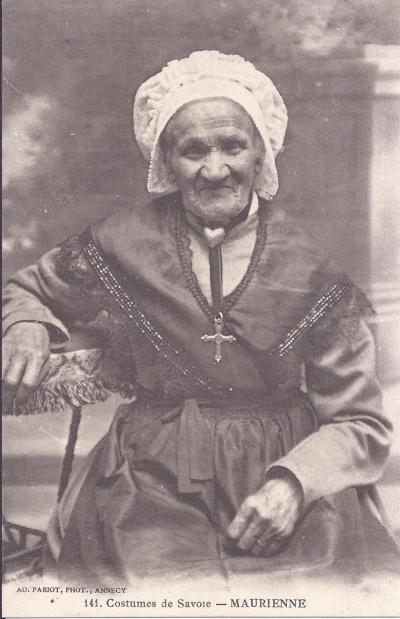
bijoux et croix des provinces de Savoie - Maurienne
bijoux de France - French regional jewelry - Antique jewelry

Saint Colomban des Villards - French folk dress and silver crosses
bij
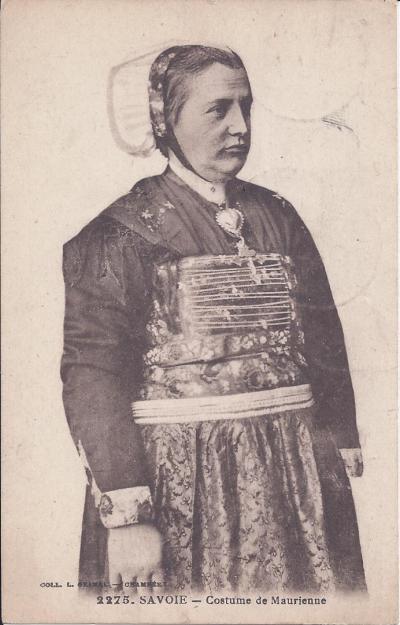
Savoy regional costume - Maurienne
oux de France - French region
al jewelry - Antiue jewelry
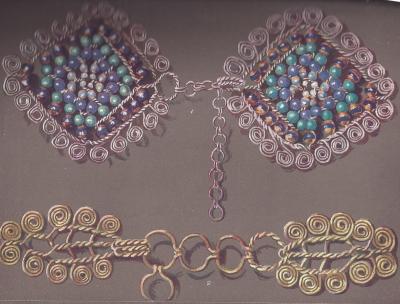
Estella Canziani - belt claps from Saint Colomban des Villards
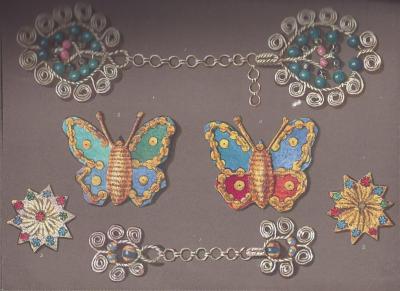
Estella Canziani
1. Clasps for ceintures. 2. Butterflies and stars for decorating ceintures of Saint Colomban des Villards
bijoux de France - French regional jewelry - Antique jewelry
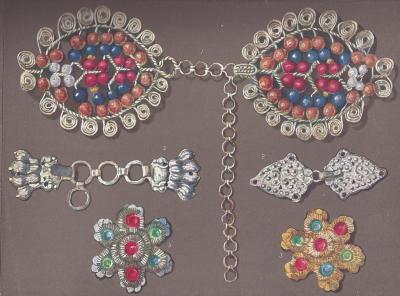
Estella Canziani - 1. Clasps for ceintures (belts)
2. Clasps for aprons. 3. Stars for decorating ceintures. Saint Colomban
bijoux de France - French regional jewelry - Antique jewelry
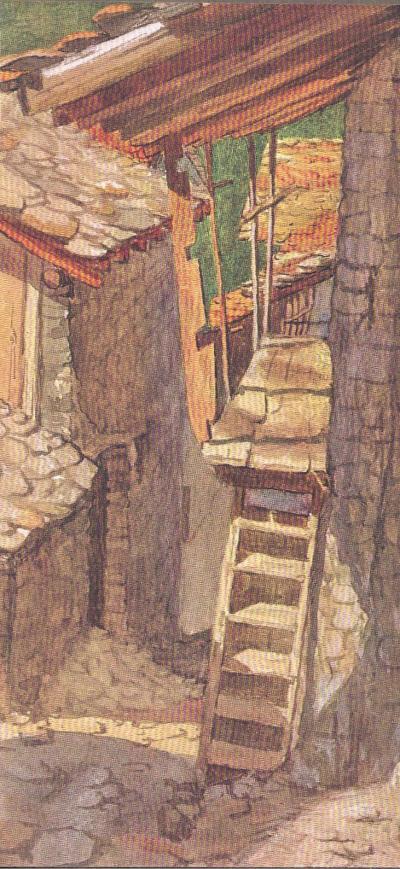
Estella Canziani - Entrance to the upper story of a stable
bijoux de France - French reional jewelry - Antique jewels
(1) CANZIANI, Estella., Costumes, traditions and songs of Savoy, Chatto and Windus 1911
(2) JOANNIS, Claudette.,Bijoux des régions de France, Flammarion, 1992
(3) SEVEZ, Laurent., Notice sur la bijouterie et l'iconographie religieuse des campagnes de la Savoie, Mémoires et documents publié par la Société savoisienne d'histoire et d'archéologie, 1862
(4) de LAS CASES, Philippe, L'Art Rustique en France - Dauphiné et Savoie, 1930
(5) VICAIRE, Gabriel., Emaux Bressans, H. Lardanchet - Editeur, 1919
(6) CANZIANI, Estella., Costumes, traditions and songs of Savoy, Chatto and Windus, 1911
(7) LUCE, Denys., Un mois à Aix en Savoie, impressions et souvenirs, 1875
(8) LAS CASES, Philippe., L'Art Rustique en France - Dauphiné et Savoie, Etablissement Busson, 1930
(9) BISCH, Paul., Notes sur les bijoux de Savoie, Société Dauphinoise d'Ethnologie et d'Archéologie, 1954
(10) DUFOURNET, Paul., L'art populaire en Savoie, Christine Bonneton Editeur, 1981
(11) JACQUES, André., Enquete sur les bijoux des paysans de Savoie, Revue de Savoie, 1956
contenu
Bijoux bressans, croix de Bresse, croix bressane, émaux de Bresse, email bressan, CARO, Delphine, BENON Laurent & FAIVRE, Aurélie., Emaux de Bresse - Joyaux du quotidien, VICAIRE, Gabriel., Emaux Bressans, H. Lardanchet, AGNES, Bruno., Emaux bressans parures charmantes, Taillanderie, CANZIANI, Estella., Costumes, traditions and songs of Savoy, Chatto and Windus 1911 CANZIANI, Estella., Costumes, moeurs et légendes de Savoie, Editions Equinoxe, 2003, DEQUIER, Daniel & ISLER, François., Costumes de fêtes en Savoie, EVEZ, Laurent., Notice sur la bijouterie et l'iconographie religieuse des campagnes de la Savoie, TROSSET, Jean-Pierre., Bijoux et croix des provinces de Savoie, Chez l'auteur, 2003, TROSSET, Jean-Pierre., Les croix de Savoie, Chez l'auteur, 1993, bijoux savoyards, croix savoyarde, croix grille de Chambéry, croix dauphiné, croix des Villards, croix bosse, Saint Colomban des Villards, croix bessans, croix à l'as, croix de Valloire, croix fleuri, créoles savoyards, croix gapençais, croix de Faucigny, croix plate pattée
French regional jewellery
Savoy
New book - Traditional French Jewellery
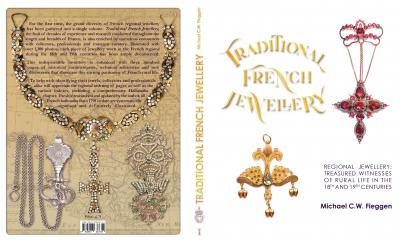
Book - Traditional French Jewellery - order here direct from the author
Dear collectors, auctioneers, dealers and jewellery lovers,
You have visited the site www.bijouxregionaux.com which since 2009 has listed all regional and traditional French jewellery, without advertising and without sales. By popular demand, this website is now finally available as a book, much more complete and with many new photos and texts that are not on the site. I traveled more than 4,500 km in 2020 to visit the various collectors and museums of France and to photograph, weigh, measure and examine their jewellery.
Large format of 23.5 x 30 cm, 304 pages, hardcover and fully illustrated with over 1300 jewels in color, this book is the first complete book on French regional jewellery and corrects the many errors and gaps observed in the other references and presents other regional jewels hitherto unknown to the public. You will find eight full pages on Breton pins and fibulae and many other jewels in museums and private collections that are not on this website. Over four months of research has gone into making the chapter on hallmarks the most reliable ever seen - clear illustrations of hallmarks have been made especially for this volume. And for the first time, collectors will have access to a complete list of all the assay office symbols, small signs withn the hallmarks that identify in which city the jewellery was hallmarked. The opening and closing dates since 1798 of the hallmark offices are also listed for the first time, allowing, with the office symbol, to better date your jewellery.
The print run of this book is very limited, which is why I recommend you order early. You will love this book I have had nothing but compliments and many clients have ordered more to offer as gifts.
To order, you can send a wire transfer or WISE transfer to Michael Fieggen - FR76 4061 8803 9700 0403 3233 171 – BIC – BOUSFRPPXXX - address Mike Fieggen, 280 rue Saint Honoré, Paris, 75001 France
Bank or wire transfer by www.wise.com in Sterling – Account holder - Michael Fieggen
IBAN - GB68TSBS30916200184462 BIC / SWIFT - TSBSGB2AXXX
Sterling cheques and PayPal welcome to address demosthenesparis@gmail.com.
Any questions ? Contact me at bijouregional@gmail.com or by telephone at + 33 1 4015 9000
One copy in French €75 Postage and packing €9 for France, €8 for Europe and overseas
Two or more copies in French €75 each Postage and packing €9 for the lot in France, overseas postage €8 each
One or more copies in English £75 sterling each Postage and packing £8 sterling each

























